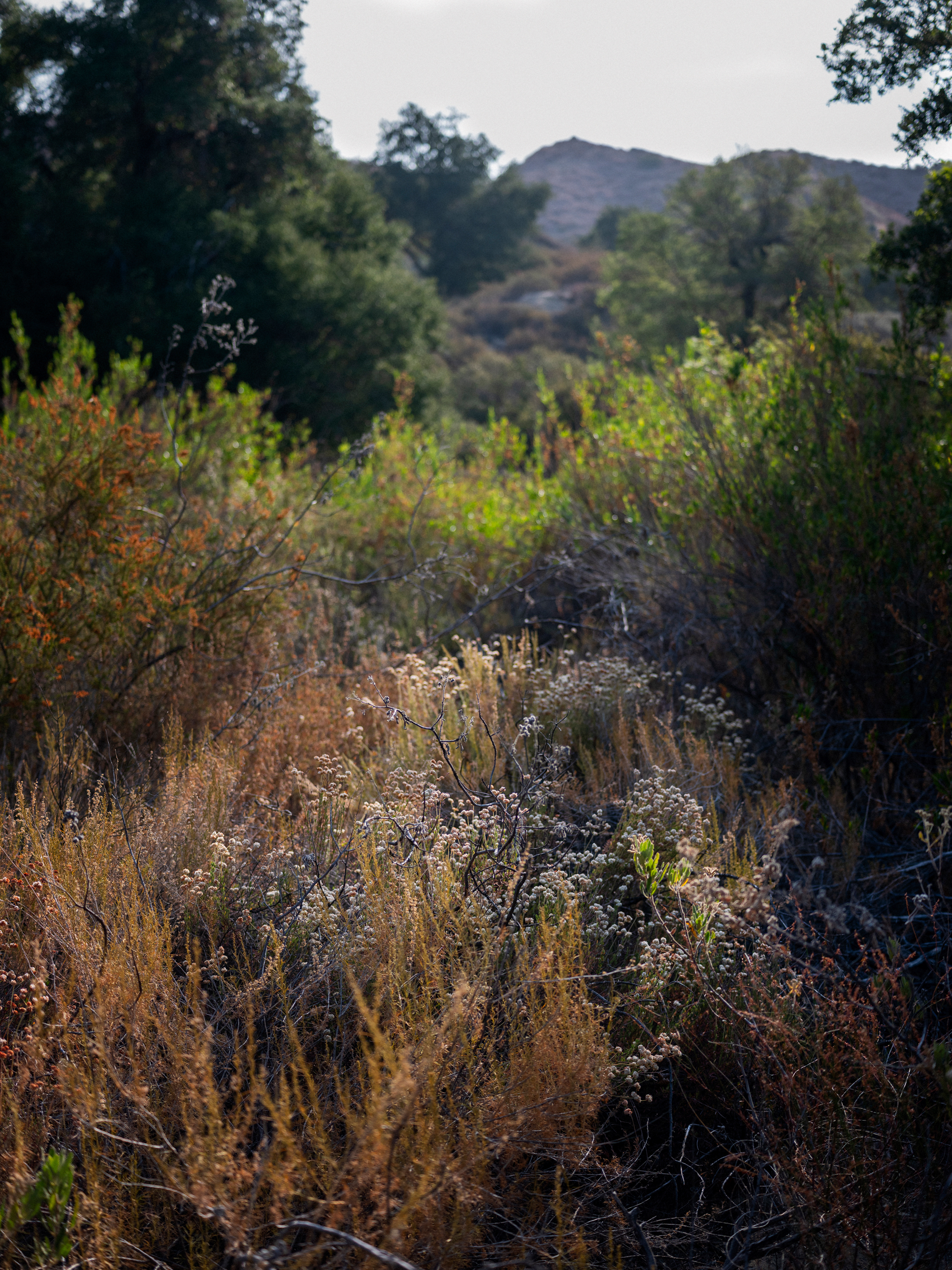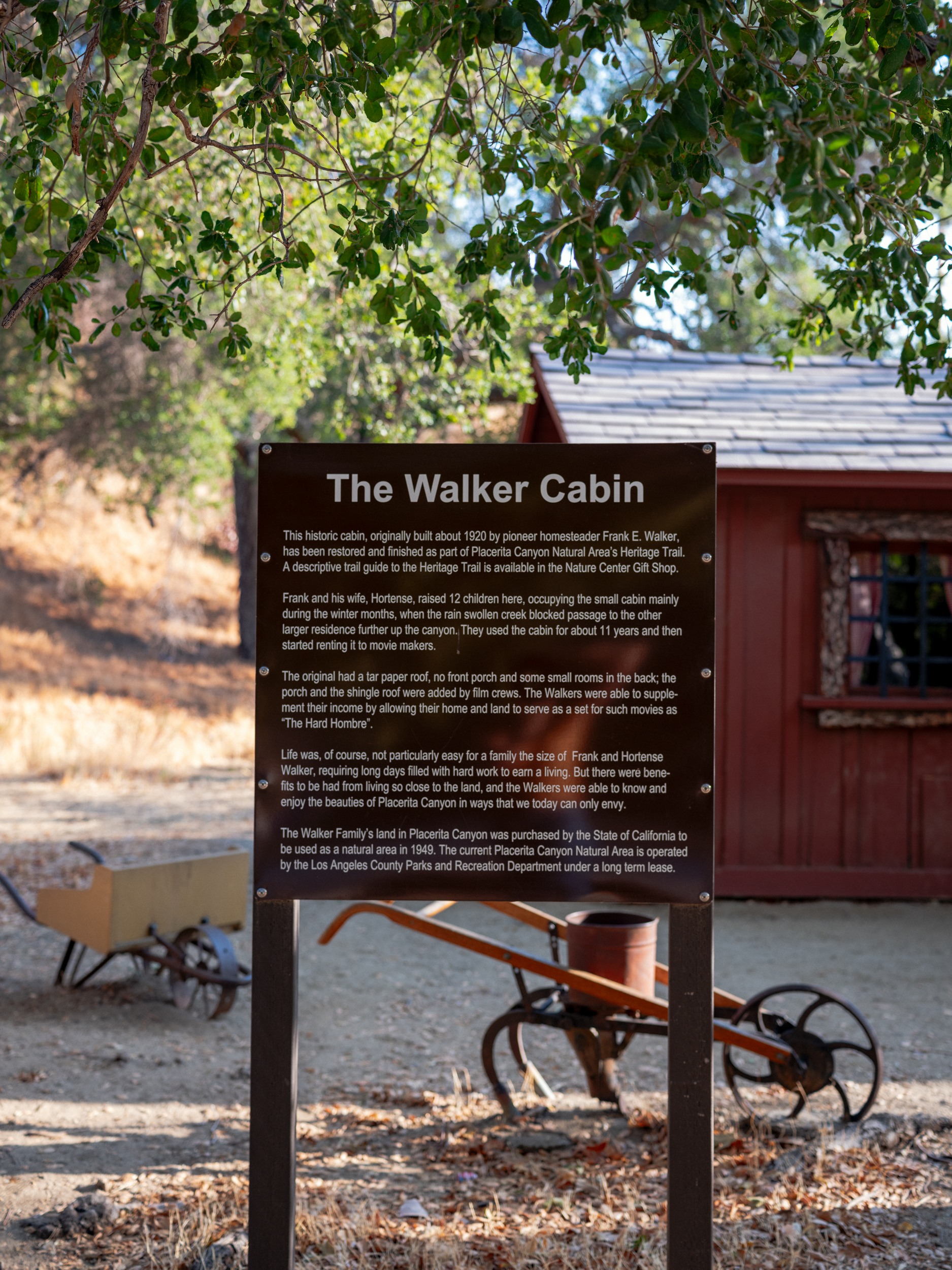Placerita Canyon Natural Area
and Nature Center
9152 Placerita Canyon Rd
Newhall, CA 91321
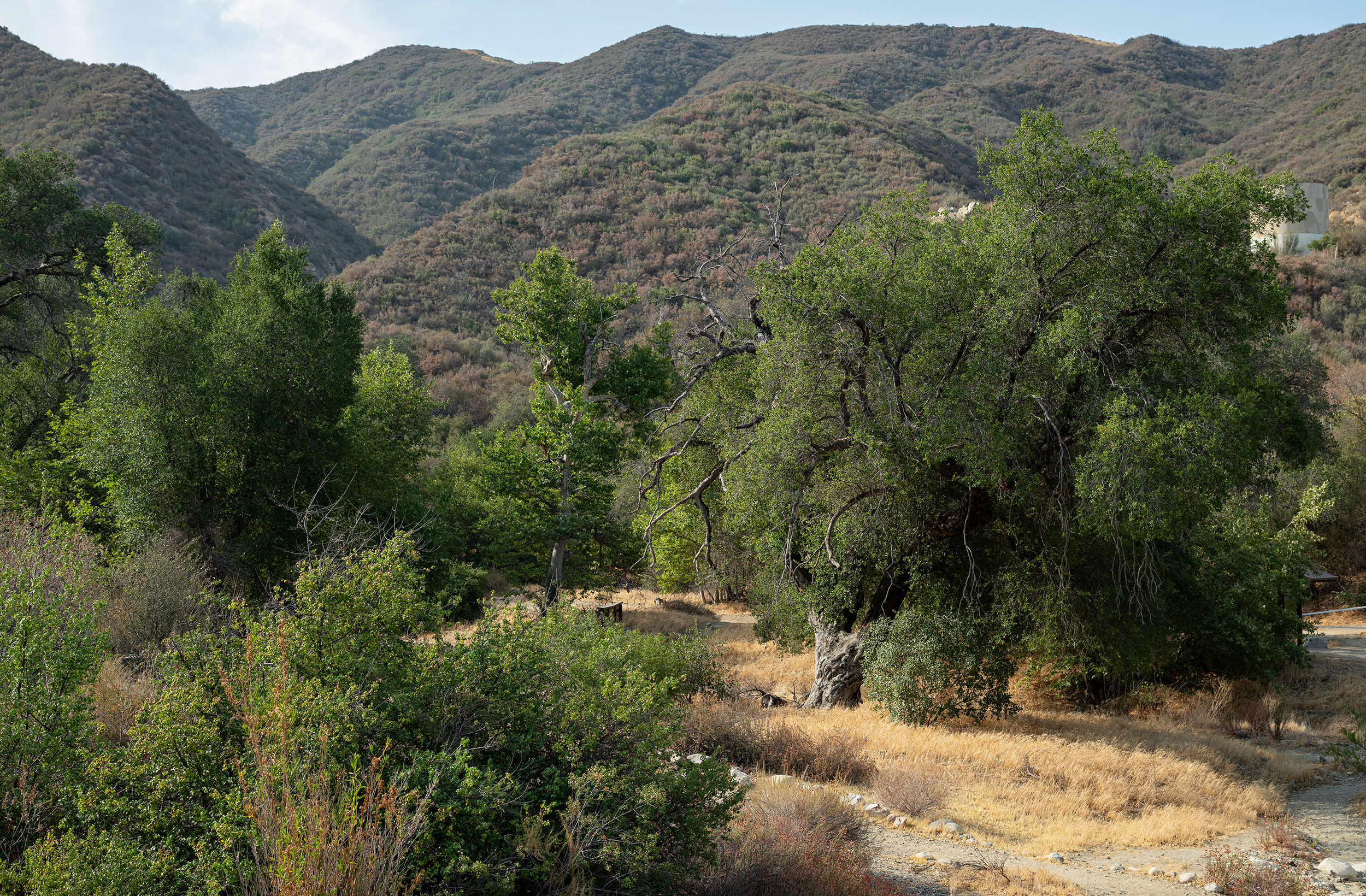
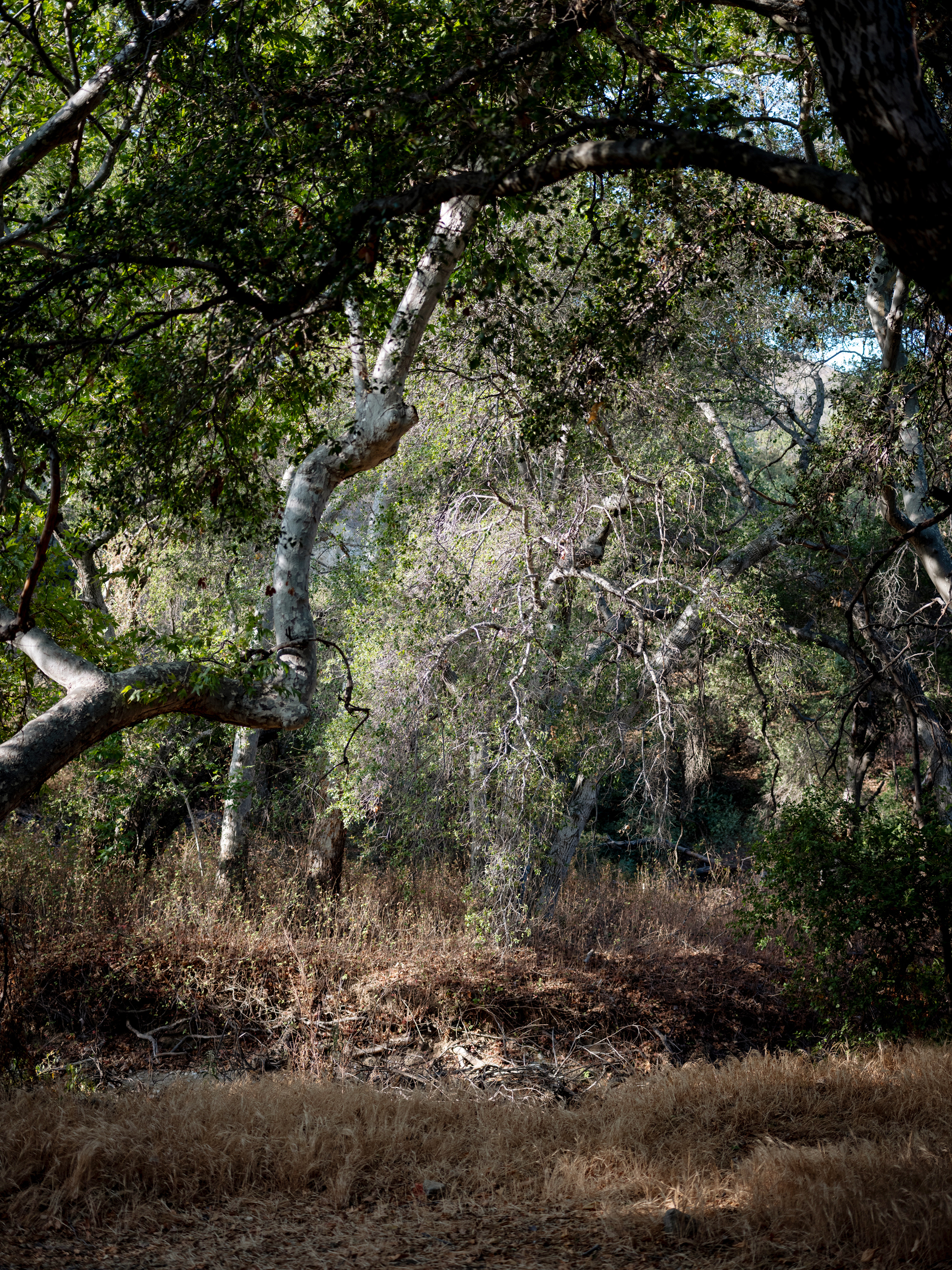
Established:
1950
Size:
330 Acres
Features:
Paved walking Trails
Trails with few steps
Public Programing
Hiking Trails
Local History
Seasonal Waterfall
Nature Trail
Picnic Area
Weird Geologic Feature
Notable Plants:
Coast live oak (Quercus agrifolia)
Canyon Live Oak (Quercus chrysolepis)
Scrub oak (Quercus berberidifolia)
Thickleaf Yerba Santa (Eriodictyon crassifolium)
Mountain mahogany (Cercocarpus betuloides)
Holly leaf cherry (Prunus ilicifolia)
California Peony (Paeonia californica)
Hoaryleaf Ceanothus (Ceanothus crassifolius)
Blue Elder Berry (Sambucus mexicana)
Best Time to visit:
All Year
Placerita Canyon has something wonderful to offer all year round and the wooded areas provide shade, giving an escape in the hottest months. In spring there are wild flowers and peonies, which can be found to the South of the Nature Center on the Acorn Trail. This is also the time that the creek is filled with water and the waterfall is active. The summer has the hills covered with chamise and buckwheat blooms. In fall the cottonwoods are bursting with golden fall color. In winter the hills begin to team with life.
The story is told like this: around noon on March 9th, 1842, on his 40th birthday, Francisco Lopez fell asleep under an oak tree and dreamed of floating in a pool of gold. When he awoke, he walked across the small, nearby, creek to a grove of sycamores, used his knife to pull up some wild onions and found gold clinging to the roots. This would be the first documented discovery of gold in, what is now considered, the State of California, predating Sutter Mill by six years.
Gloriously named “The Oak of the Golden Dream’’, the tree that he slept beneath and the creek that he crossed are both to be found at the Placerita Canyon State Park. Visitors can access the oak by using the paved “Heritage Trail”, a map of the trail and the information for each numbered stop, can be found here.
The trail follows the creek underneath Placerita Canyon Road. The underpass was painted with a series of murals in 1976 by artist by Rudy Pavini. The murals show the history of the canyon starting with the Tatvim in approx. 450 A.D. to the discovery of gold in 1842. The oak is found in a beautiful grove of other oak trees and western sycamores. There are often long stem buckwheats up on the hill behind the oak. A dirt trail continues past the oak, to a particularly beautiful meadow at the edge of the Natural Area.
Placerita Canyon has several other self guided nature trails addition to the Heritage Trail. The Acorn trail, the Botany Trail and the Ecology Trail all which start in the general area of the Nature Center. The Ecology Trail has many identification tags for many of the plants, which makes it a great resource for those who are learning to ID plants in the wild. The Trail is a relatively easy three-quarters of a mile long. It starts at the base of the canyon and winds up the side of the hills. The elevation change, while slight, is enough to offer an incredible range of diversity in habitats and plants. Visitors can find three distinct plant communities, of oak woodland, seasonal riparian, and the chaparral.
Gloriously named “The Oak of the Golden Dream’’, the tree that he slept beneath and the creek that he crossed are both to be found at the Placerita Canyon State Park. Visitors can access the oak by using the paved “Heritage Trail”, a map of the trail and the information for each numbered stop, can be found here.
The trail follows the creek underneath Placerita Canyon Road. The underpass was painted with a series of murals in 1976 by artist by Rudy Pavini. The murals show the history of the canyon starting with the Tatvim in approx. 450 A.D. to the discovery of gold in 1842. The oak is found in a beautiful grove of other oak trees and western sycamores. There are often long stem buckwheats up on the hill behind the oak. A dirt trail continues past the oak, to a particularly beautiful meadow at the edge of the Natural Area.
Placerita Canyon has several other self guided nature trails addition to the Heritage Trail. The Acorn trail, the Botany Trail and the Ecology Trail all which start in the general area of the Nature Center. The Ecology Trail has many identification tags for many of the plants, which makes it a great resource for those who are learning to ID plants in the wild. The Trail is a relatively easy three-quarters of a mile long. It starts at the base of the canyon and winds up the side of the hills. The elevation change, while slight, is enough to offer an incredible range of diversity in habitats and plants. Visitors can find three distinct plant communities, of oak woodland, seasonal riparian, and the chaparral.
It begins behind the Nature Center at the base of the canyon. At the beginning of the trail there is an example of a Tataviam Kyii and several ways of Tataviam food storage. At certain points, the trail runs along a small seasonal creek. Visitors can see the difference in plants that prefer and or can handle seasonal flooding, great for planting around a bioswale, vernal pool or an area that naturally floods. The trail then winds a little up into the hills and the plant community changes again and you enter the chaparral. Here visitors can see thickleaf yerba santa, chamise, various species of ceanothus and black sage, amongst many other plants. The top of the trail has a charming view of the canyon floor, which is especially delightful in late spring.
“Placerita Canyon is a beautiful place no matter what time of year. However unlikely it may seem, especially during our late summer heat waves, there is always something here in bloom.”
The other hillsides offer more challenging and longer hiking trails. In the winter through late spring/early fall visitors can hike to a waterfall and along the wash that runs through the main section of the natural area. The Canyon’s hillsides offer access to many exciting chaparral plants that are not always so easy to reach.
Placerita Canyon is a beautiful place no matter what time of year. However unlikely it may seem, especially during our late summer heat waves, there is always something here in bloom. The beauty of the canyon and its almost mythical history, make it such a magical place. The Placerita Canyon is a perfect example of how resilient and yet how fragile our ecosystem can be.
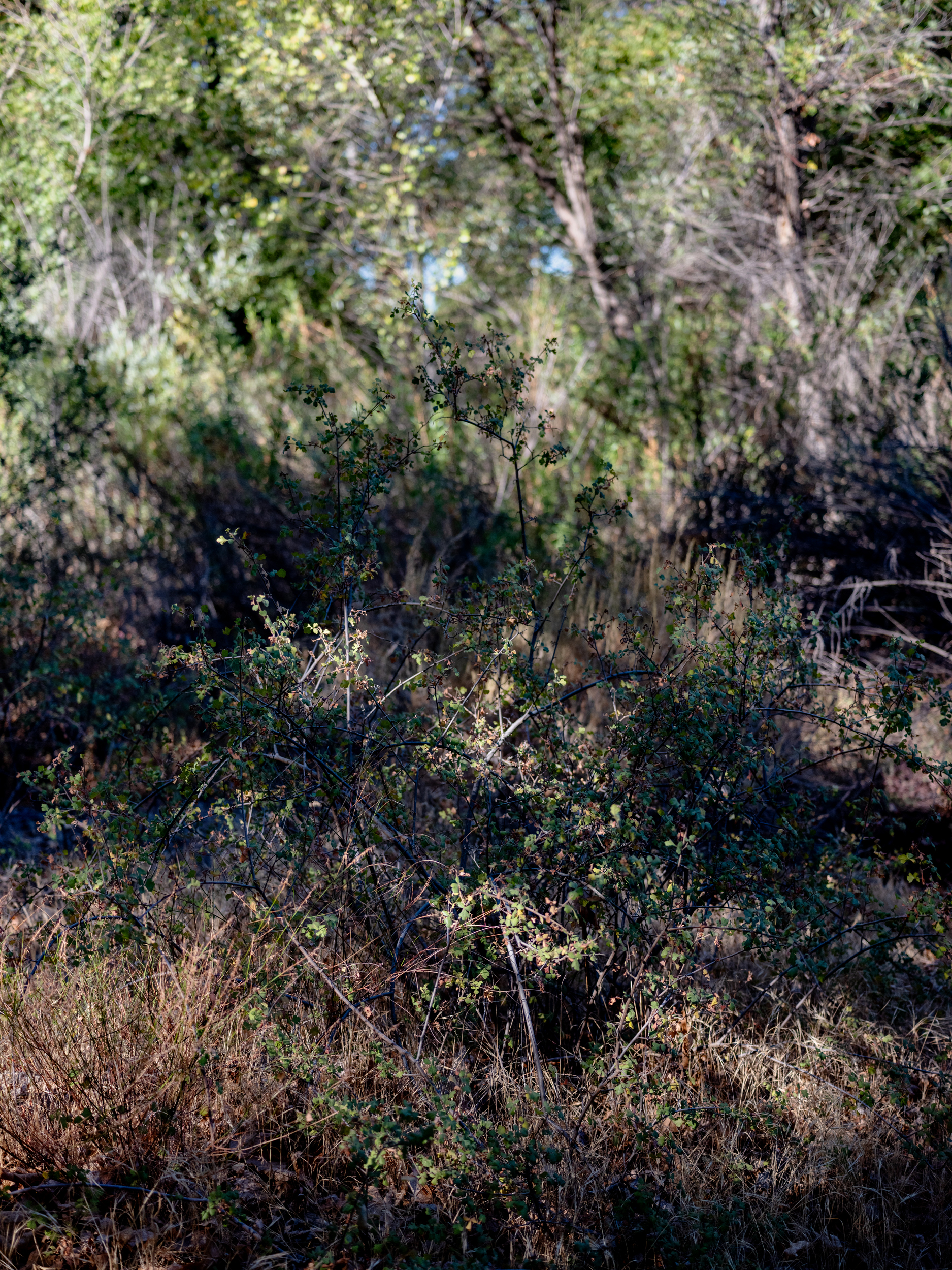
(image taken in early August)
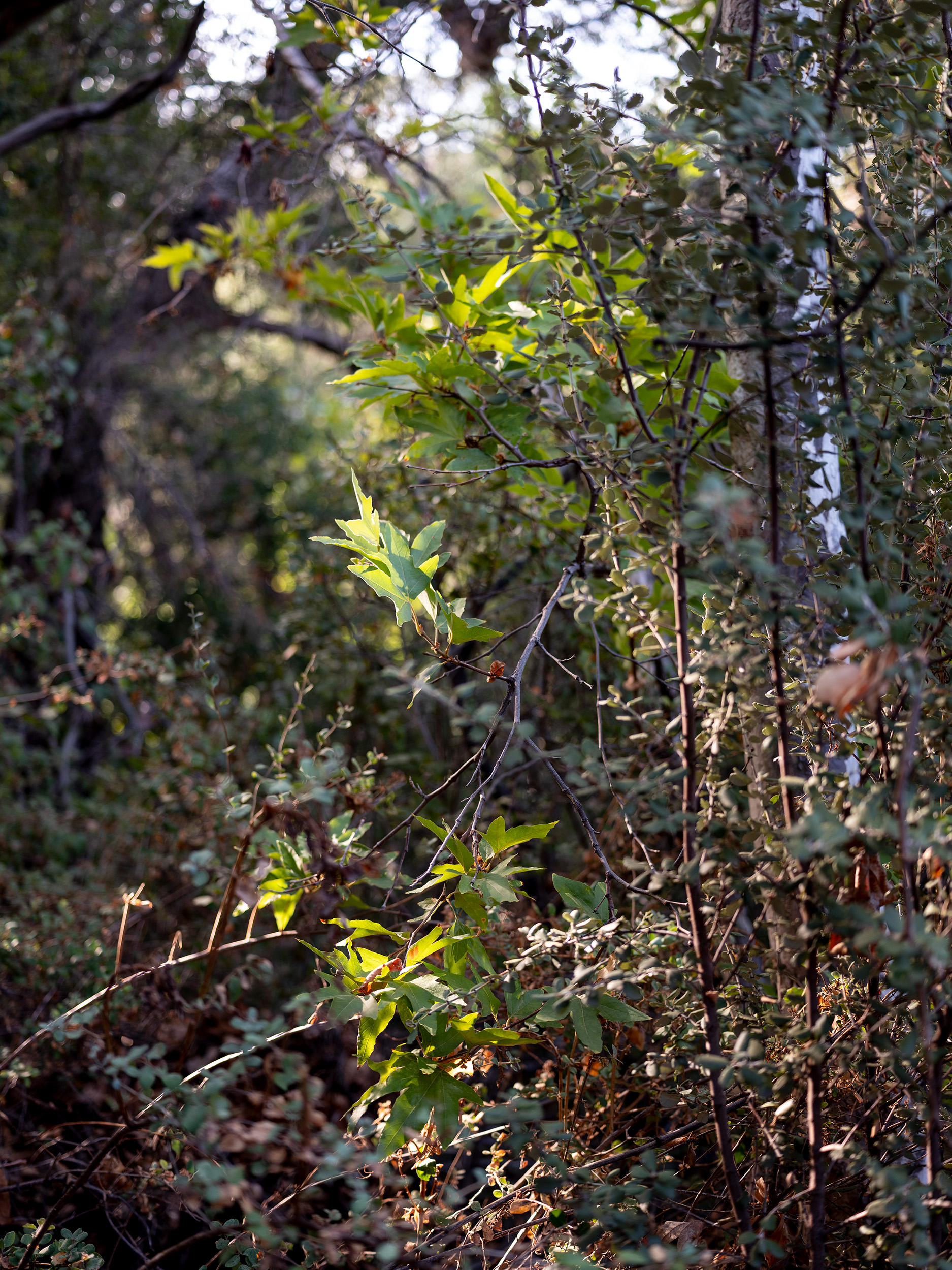
The Tataviam have lived in Santa Clarita and the surrounding areas since 450 A.D. They
inhabited about 20 villages that ranged through the Topatopa Mountains to the Sawmill Mountains in the North and into Antelope Valley to the east. Placerita Canyon itself, was used as a foraging site for acorns, an important food source.
When Mission San Fernando Rey de España was founded in 1797, the land in the Santa Clarita Valley was seized to become the Mission Rancho and used for agriculture. The Tataviam who were living in the valley, specifically the villages of Nuhubit and Chaguibit were taken to the mission, converted to Catholicism and used for labor.
In 1842 after the Mexican War of Independence and not long before Lopez would have his prophetic dream, the land was secularized from the church and given as a land grant to Antionio De Valle. Apparently the land was meant to be given back to the Tataviam, however that shockingly didn’t happen.
It was this transfer of land that gave Lopez the opportunity to wander around the Canyon on his 40th birthday and discover gold. As beautiful as the story of the Oak of the Golden dream is, on closer examination, the story changes.
When Mission San Fernando Rey de España was founded in 1797, the land in the Santa Clarita Valley was seized to become the Mission Rancho and used for agriculture. The Tataviam who were living in the valley, specifically the villages of Nuhubit and Chaguibit were taken to the mission, converted to Catholicism and used for labor.
In 1842 after the Mexican War of Independence and not long before Lopez would have his prophetic dream, the land was secularized from the church and given as a land grant to Antionio De Valle. Apparently the land was meant to be given back to the Tataviam, however that shockingly didn’t happen.
It was this transfer of land that gave Lopez the opportunity to wander around the Canyon on his 40th birthday and discover gold. As beautiful as the story of the Oak of the Golden dream is, on closer examination, the story changes.
It moves from “romantic fairytale of dreams and oaks and gold” too much more of “trained mineralogist finds gold after looking for in it an area in which it had been previously reported” territory. I Because that is really what happened. Lopez had studied mineralogy at Colegia de Mineria in Mexico City and was using his time looking after cattle on his niece’s land to look for gold. There had been reports of gold in the area since the 1790’s and as recently as 1833.
“Apparently the land was meant to be given back to the Tataviam, however that shockingly didn’t happen.”
In the late 1800’s, after the treaty of Guadalupe, William Raymond Walker and Rosa Belle Evans acquired the mining rights for Placerita Canyon. Their son Frank would later in 1909, build the Walker Cabin and start a “gold mining camp”, complete with cabins, picnic tables and a bbq dinner. The family moved there full time in 1920 1920 until 1949. The Walkers homesteaded on the land and raised 12 children here. Interestingly, the family went from living in the cabin to renting it out to Hollywood productions as a homesteaders cabin. The State of California purchased the land in 1949 for the creation of the state park.
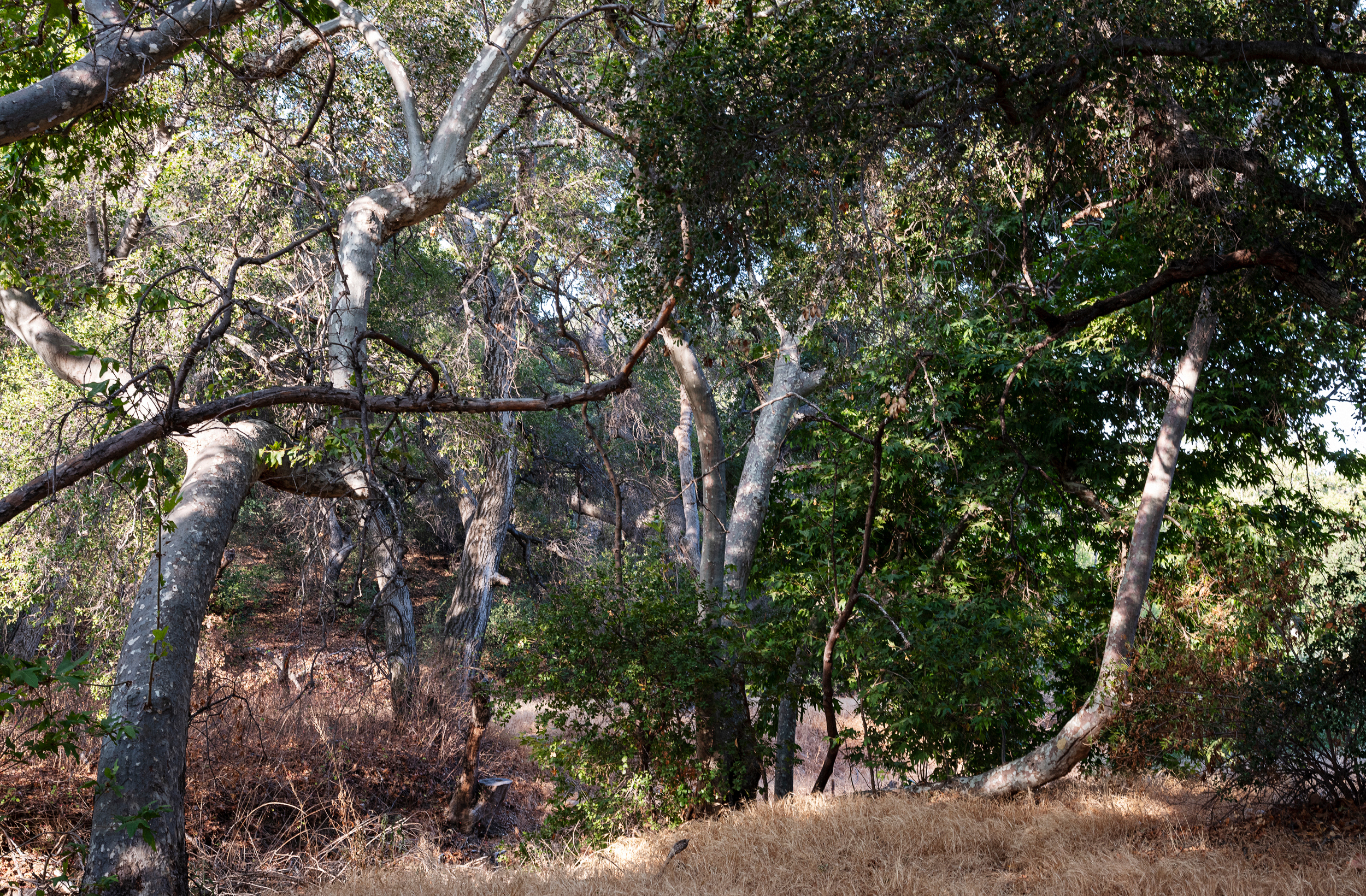
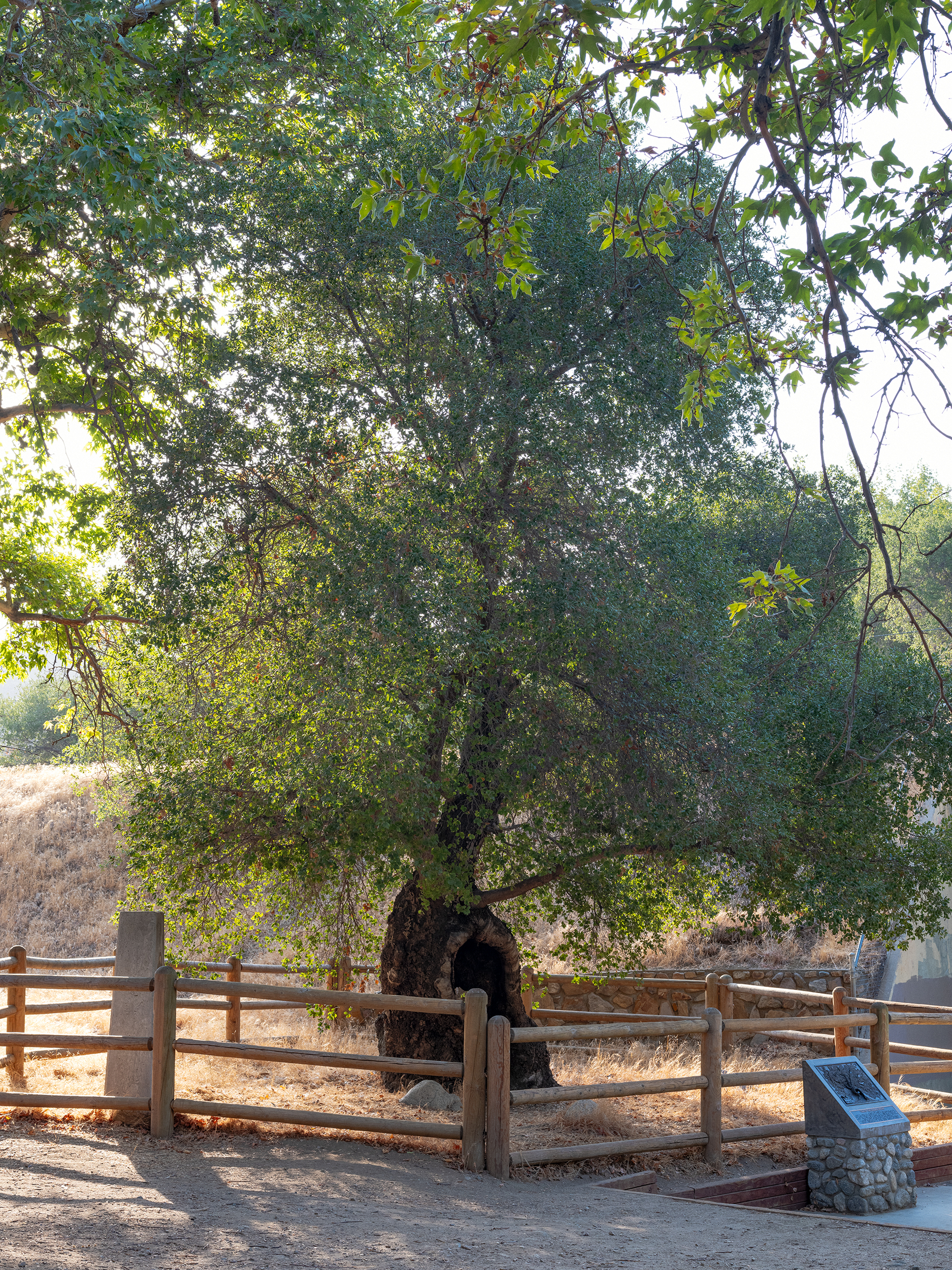
Oak of the Golden Dream
The oak of the golden dream has not always been so well cared for. The tree was registered as a historic landmark in 1935, but by the late 80’s it was struggling. The tree had been vandalized, and was old and sick. Possibly the largest contributor to the declining health was the creation of Placerita Canyon Road, which runs just behind the tree. The dirt that was brought in to create the road was left and was significantly higher than the base of the tree. Vitortors packed down the ground around the base damaging the tree. This area was fenced off and the tree was given a much needed pruning to relieve it of dead branches which were causing the hollow trunk to sag. The oak is now in much better health.
Nature Center Opening Hours and Information:
Phone: (661) 259-7721
Email: info@placerita.org
Hours: 9am – 5pm Tuesday-Sunday
Natural Area Opening Hours:
March 1st to October 31st
Operating Hours
Tuesday – Sunday
8:00am to 7:30pm
Closed Monday
November 1st to February 28th
Operating Hours
Tuesday – Sunday
8:00am to 5:00pm
Closed Monday
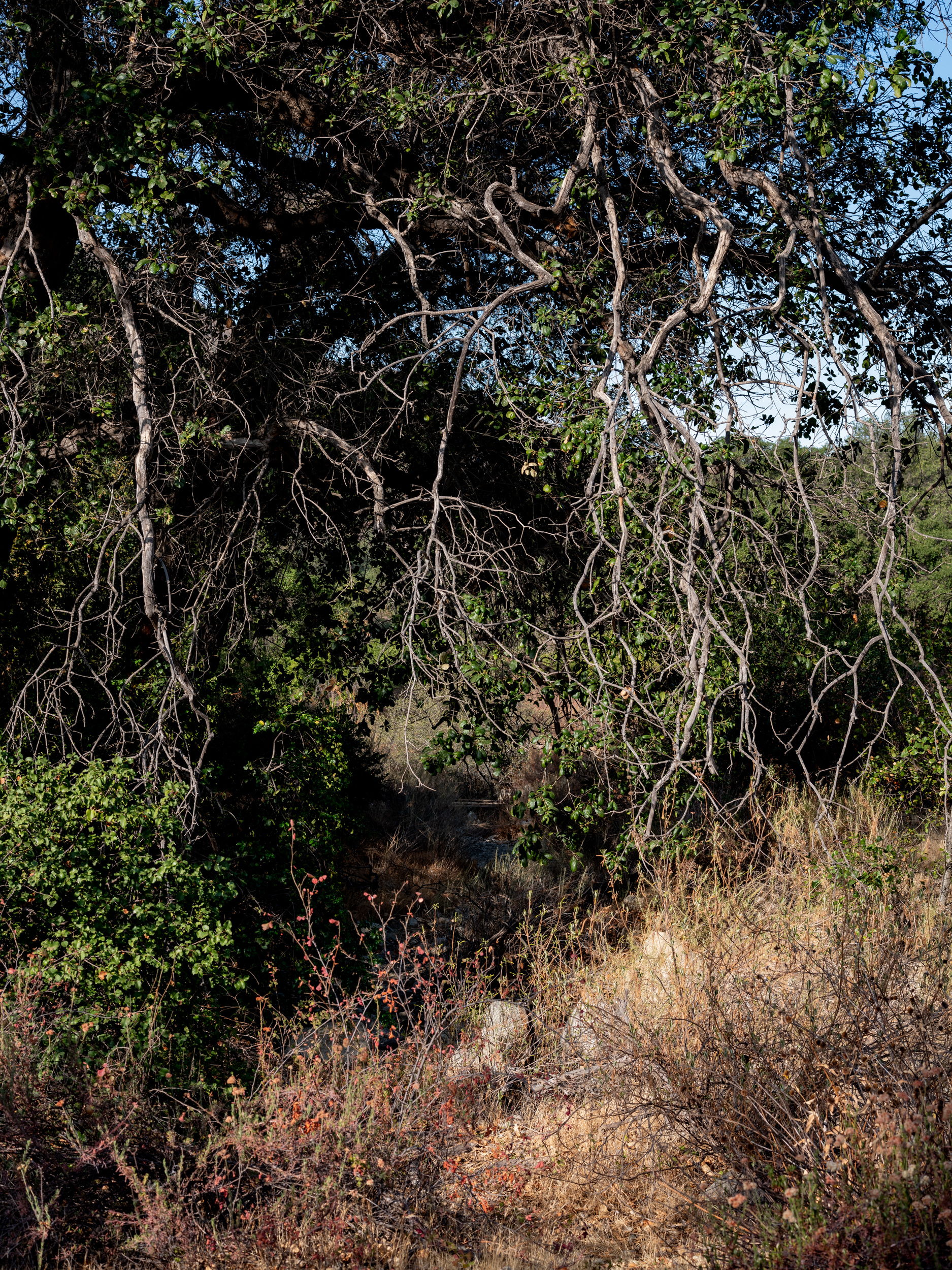
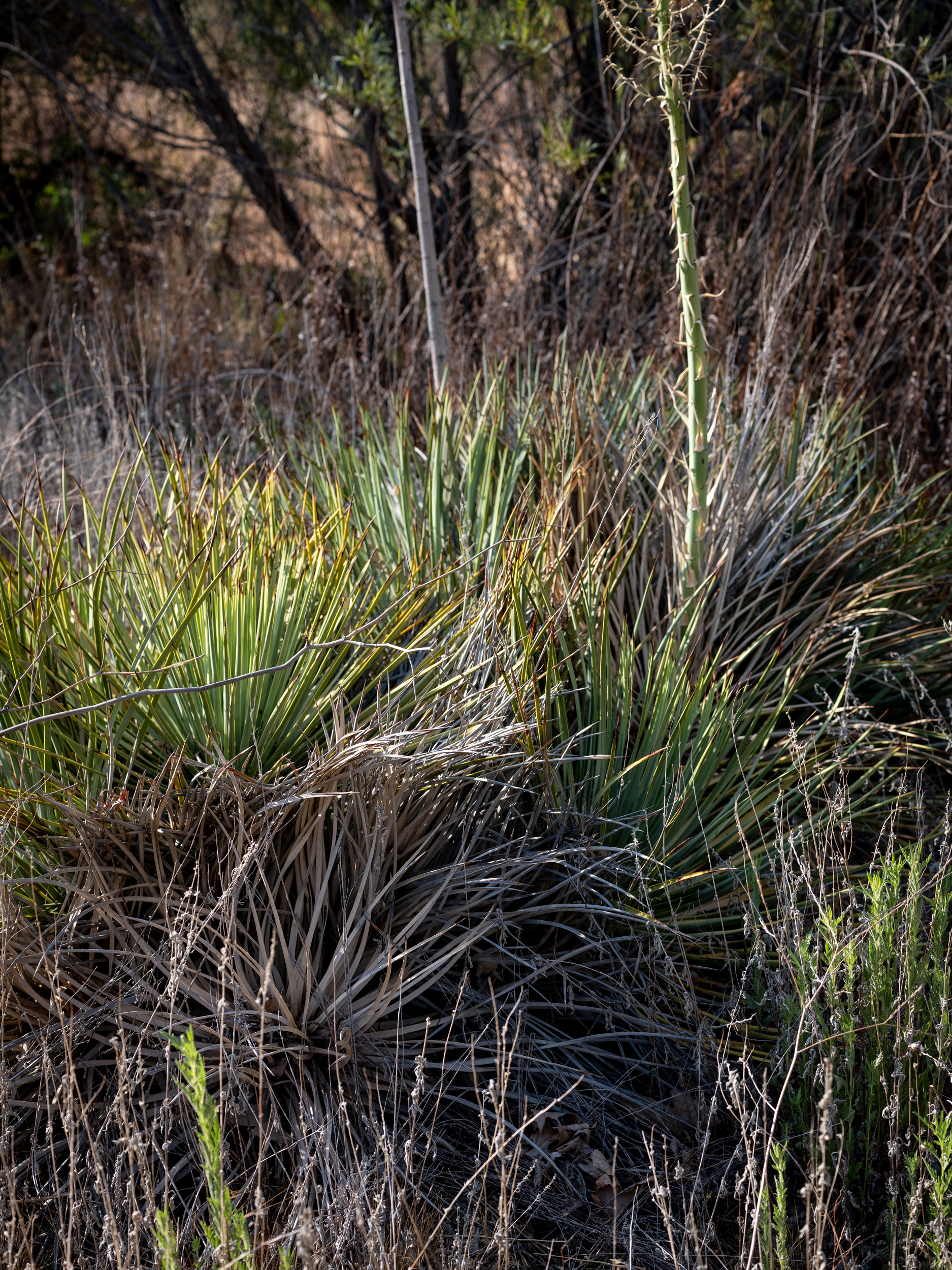
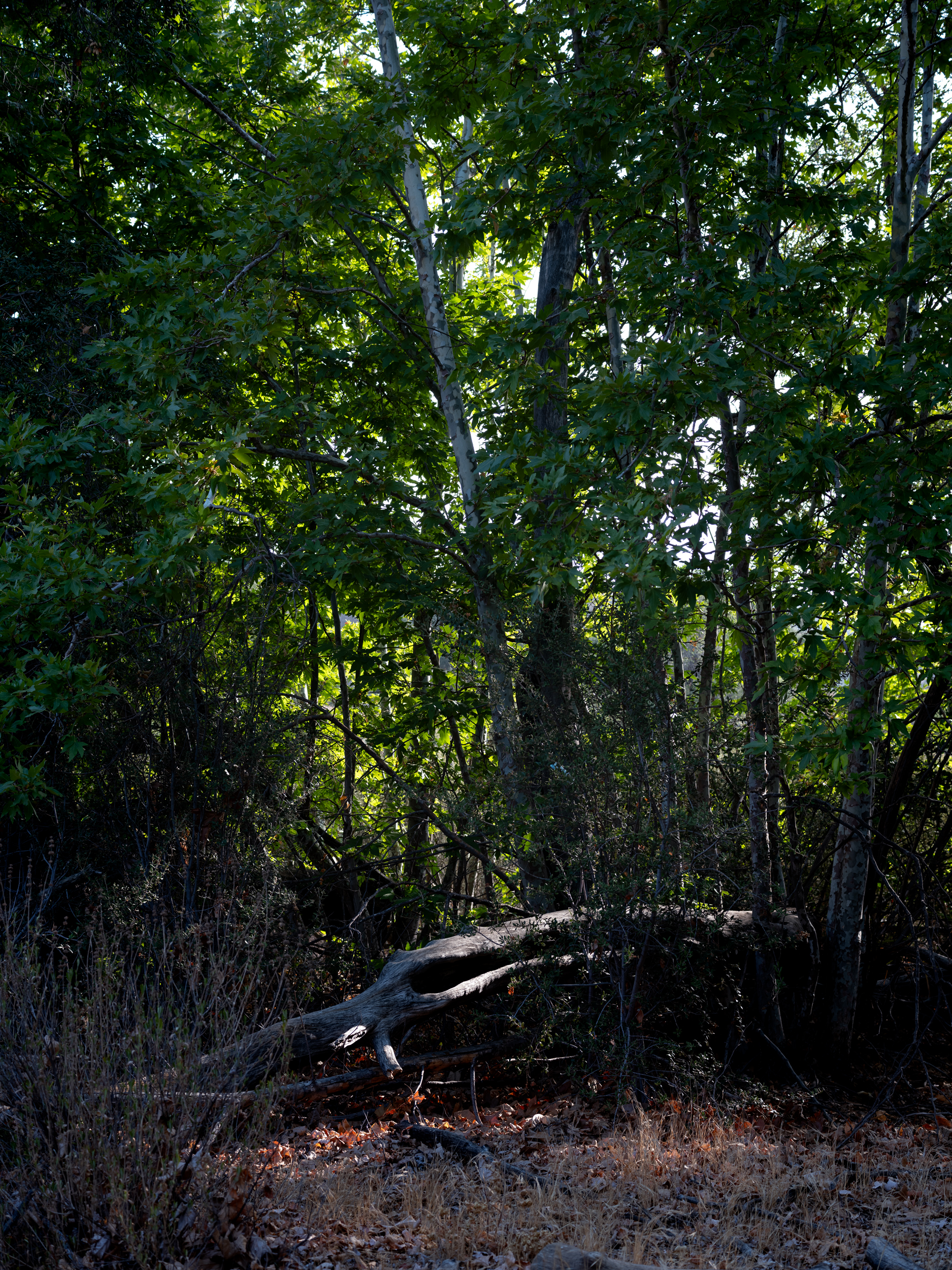
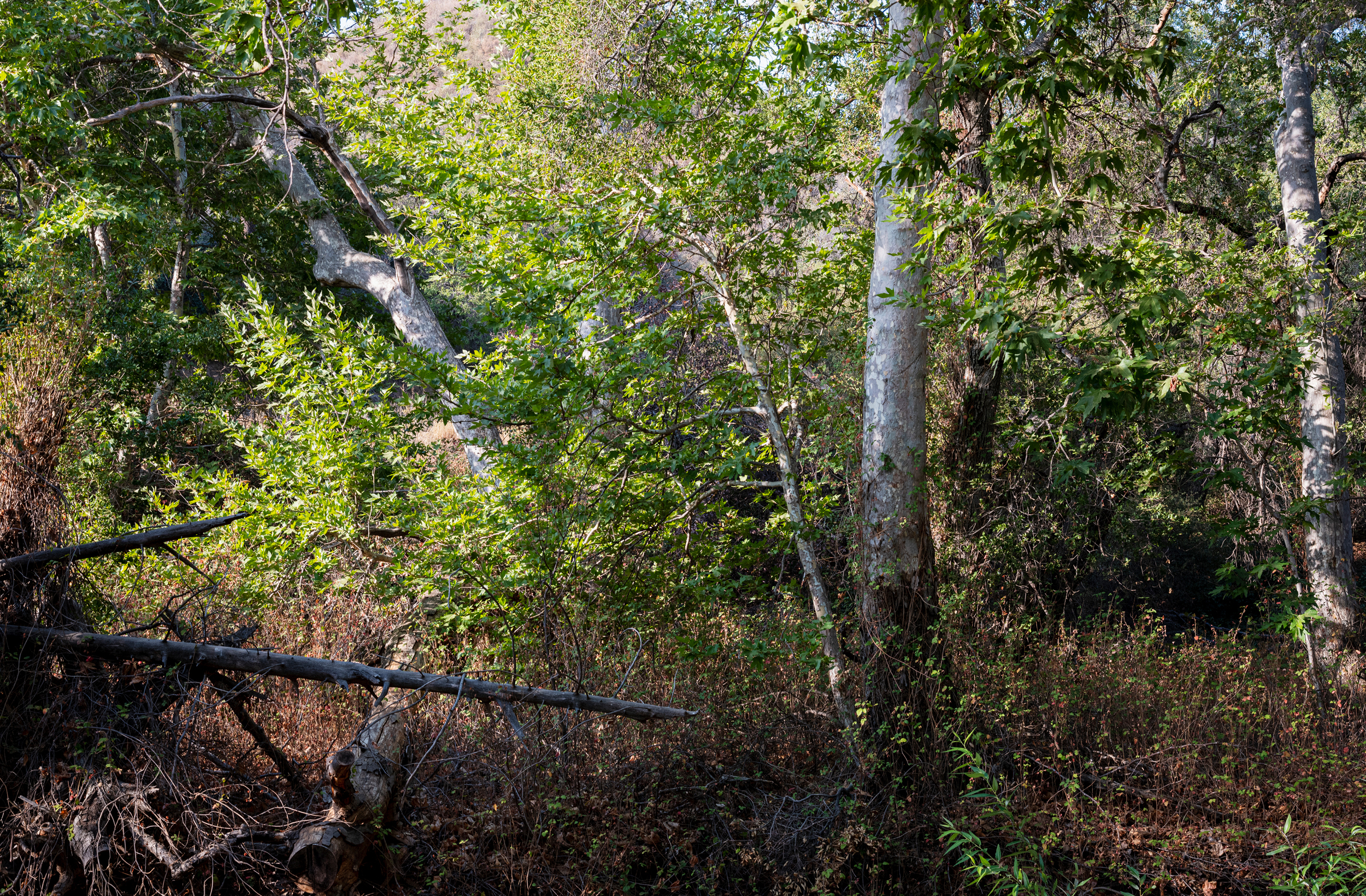
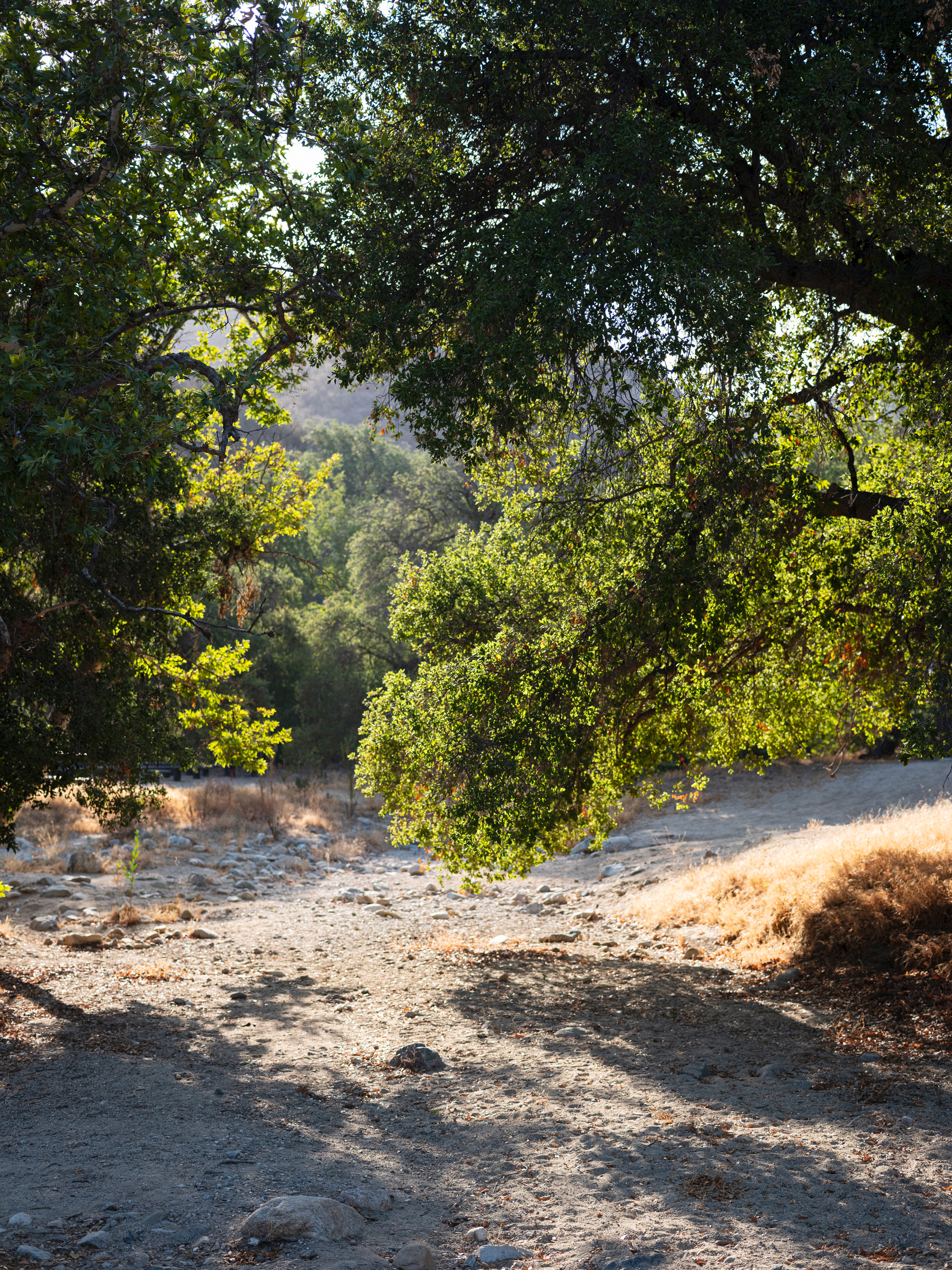
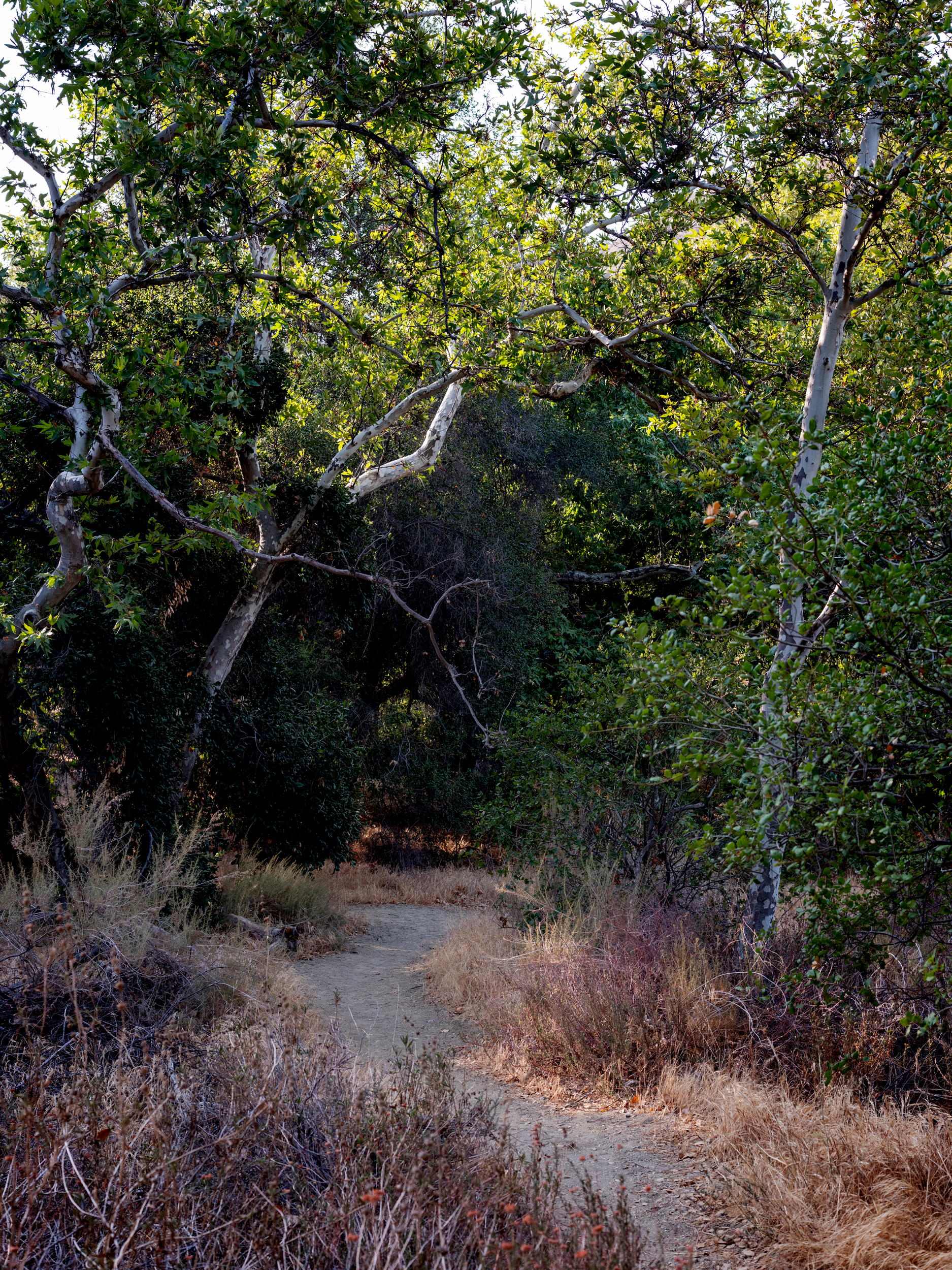
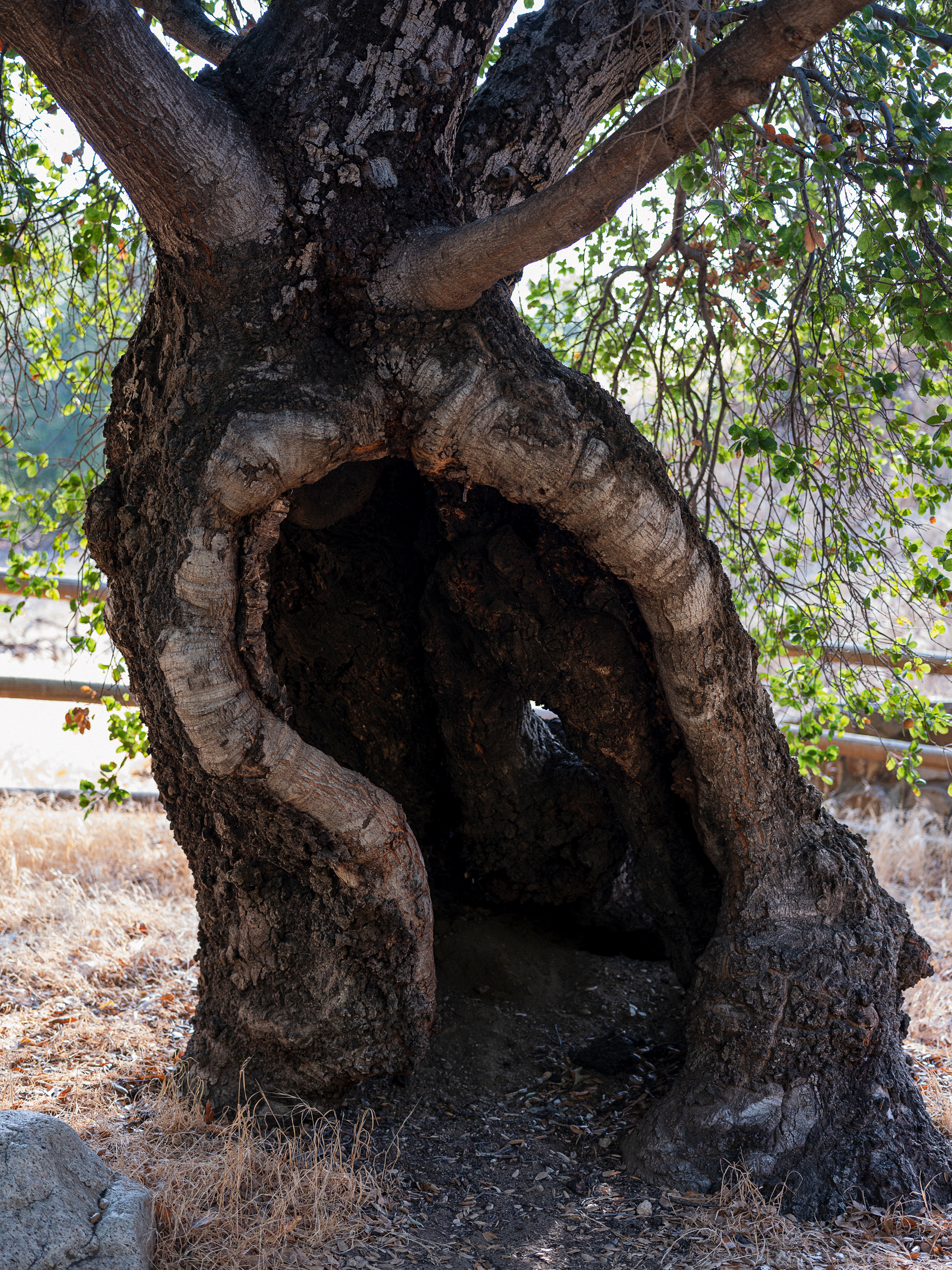
(image taken in early August)
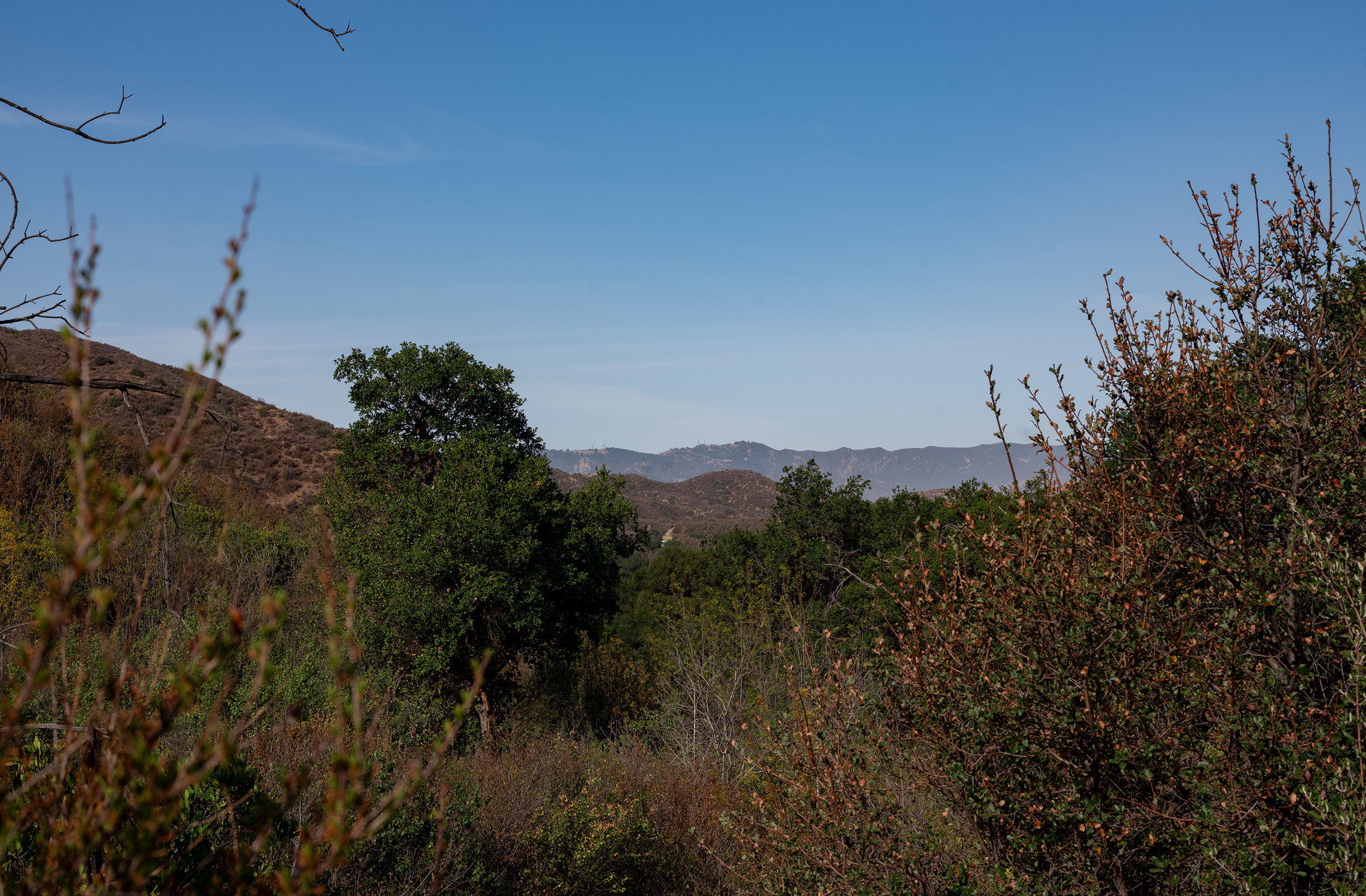
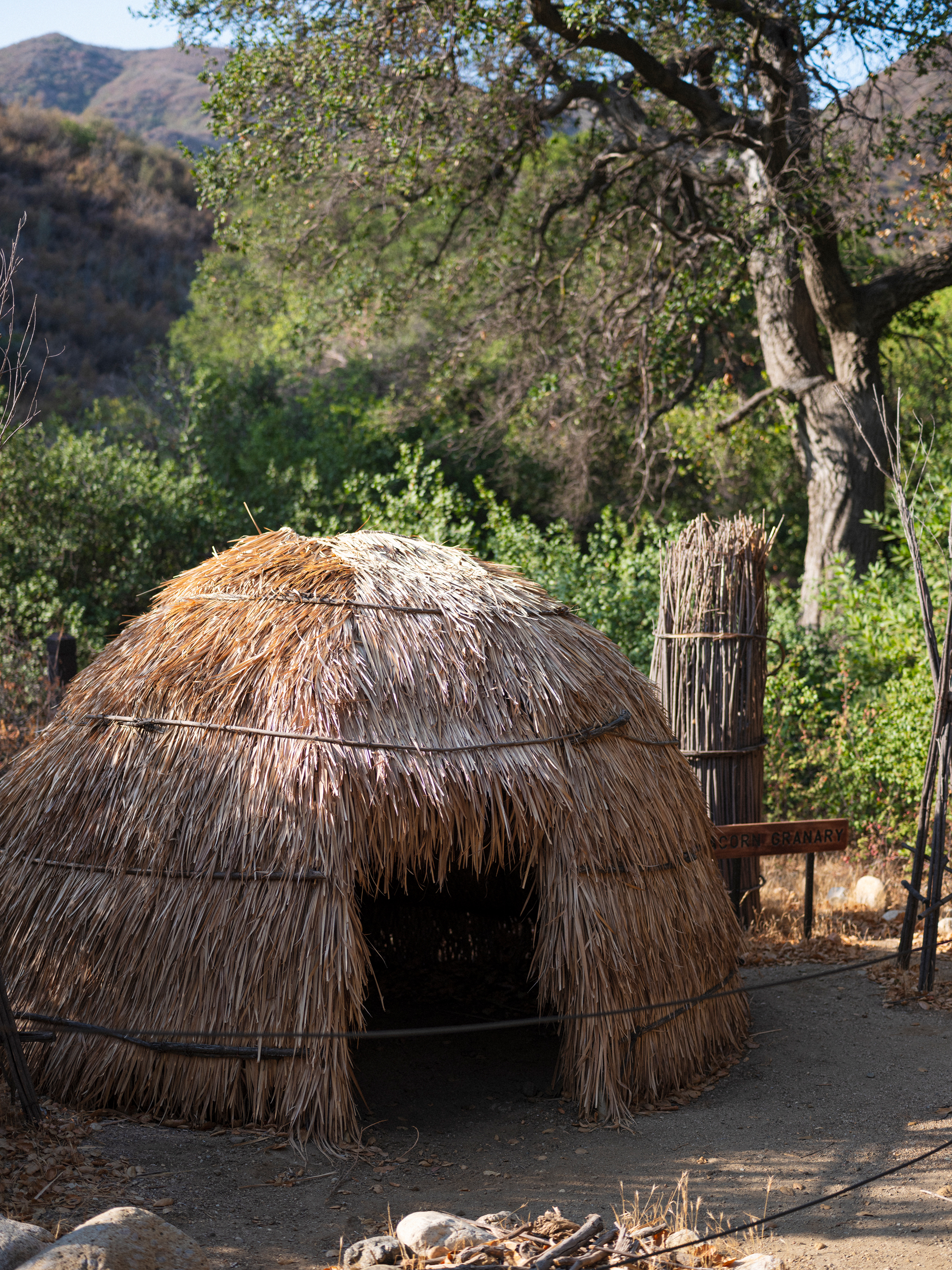
(image taken in early August)
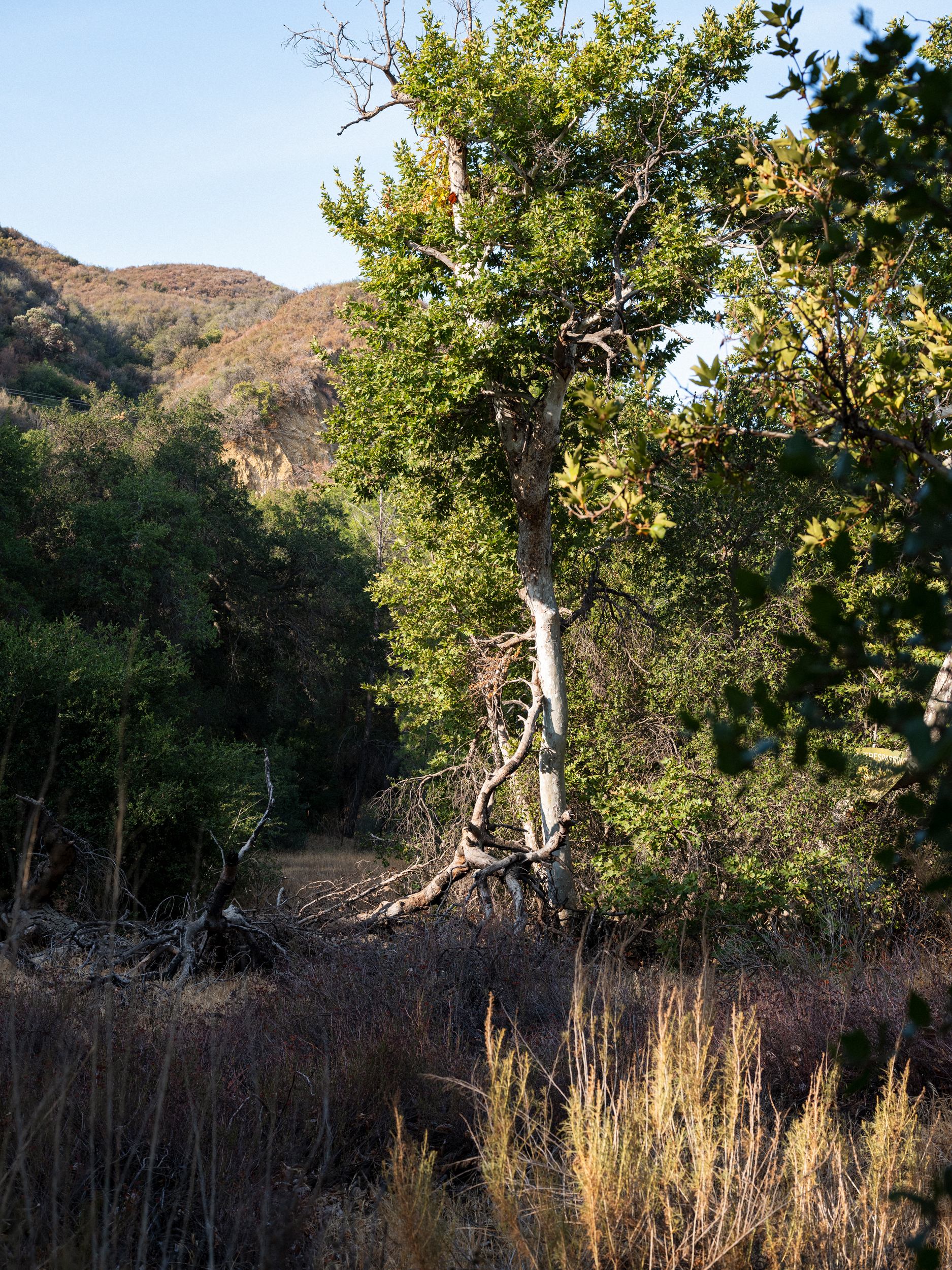
(image taken in early August)


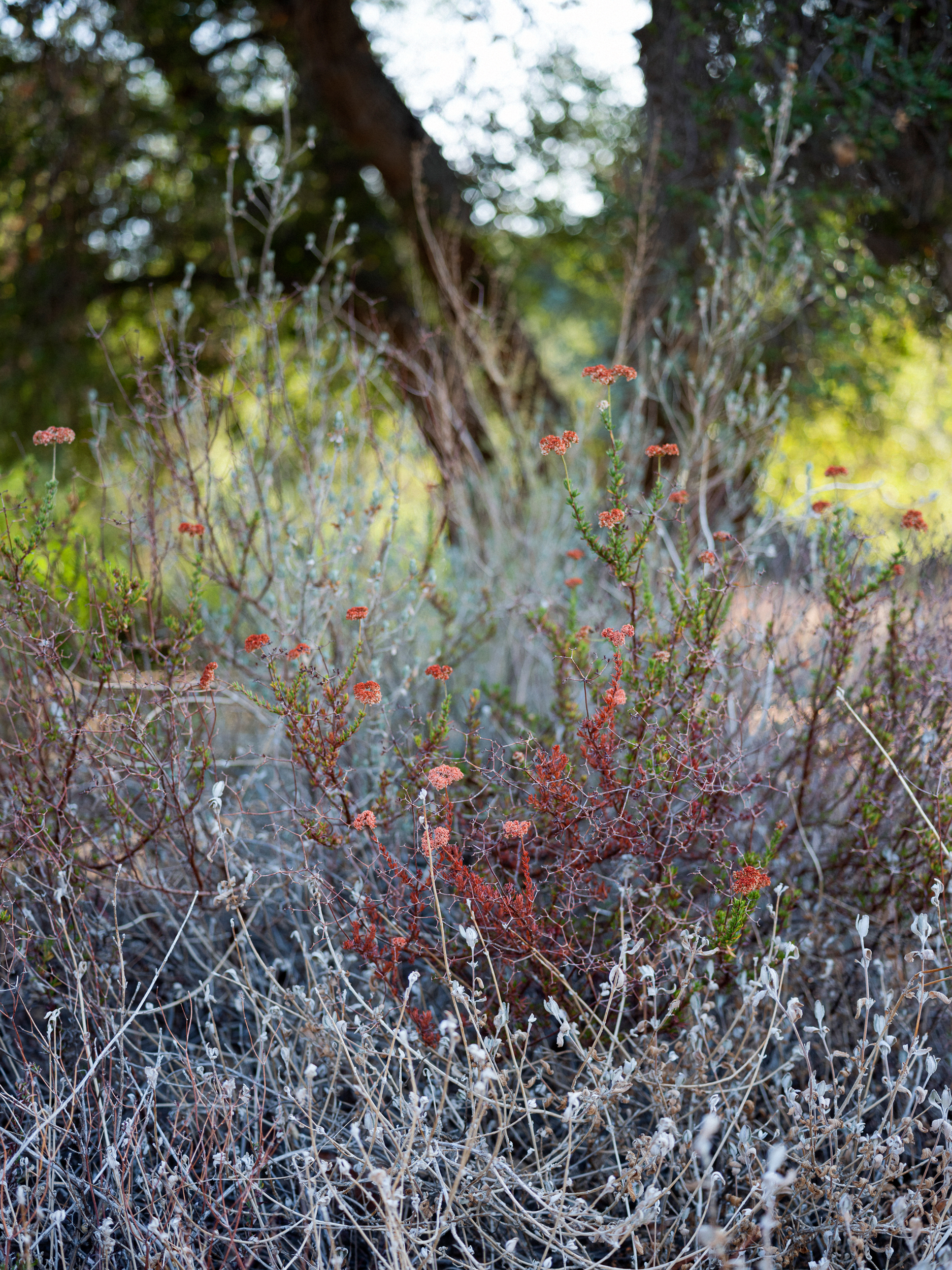
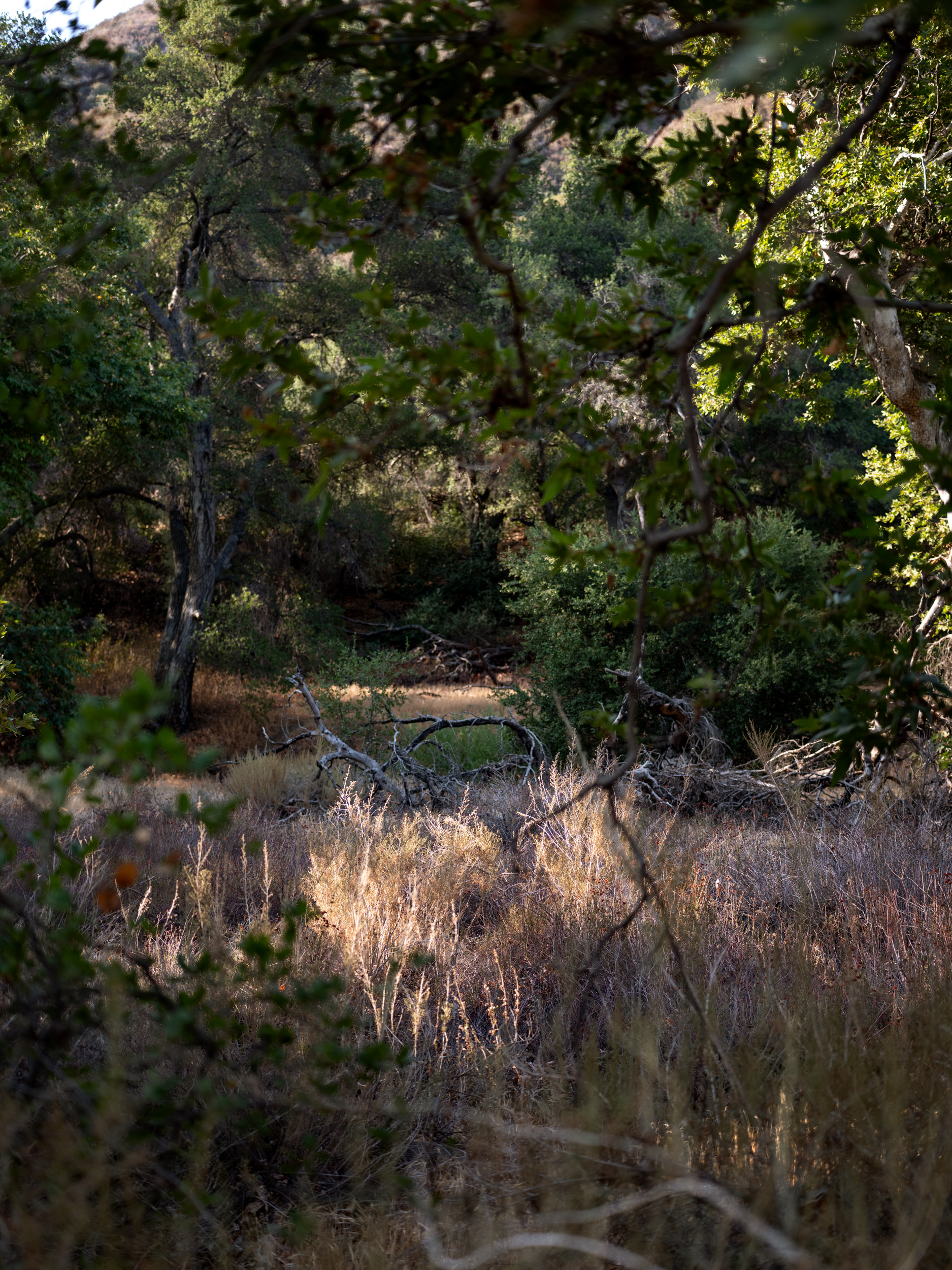
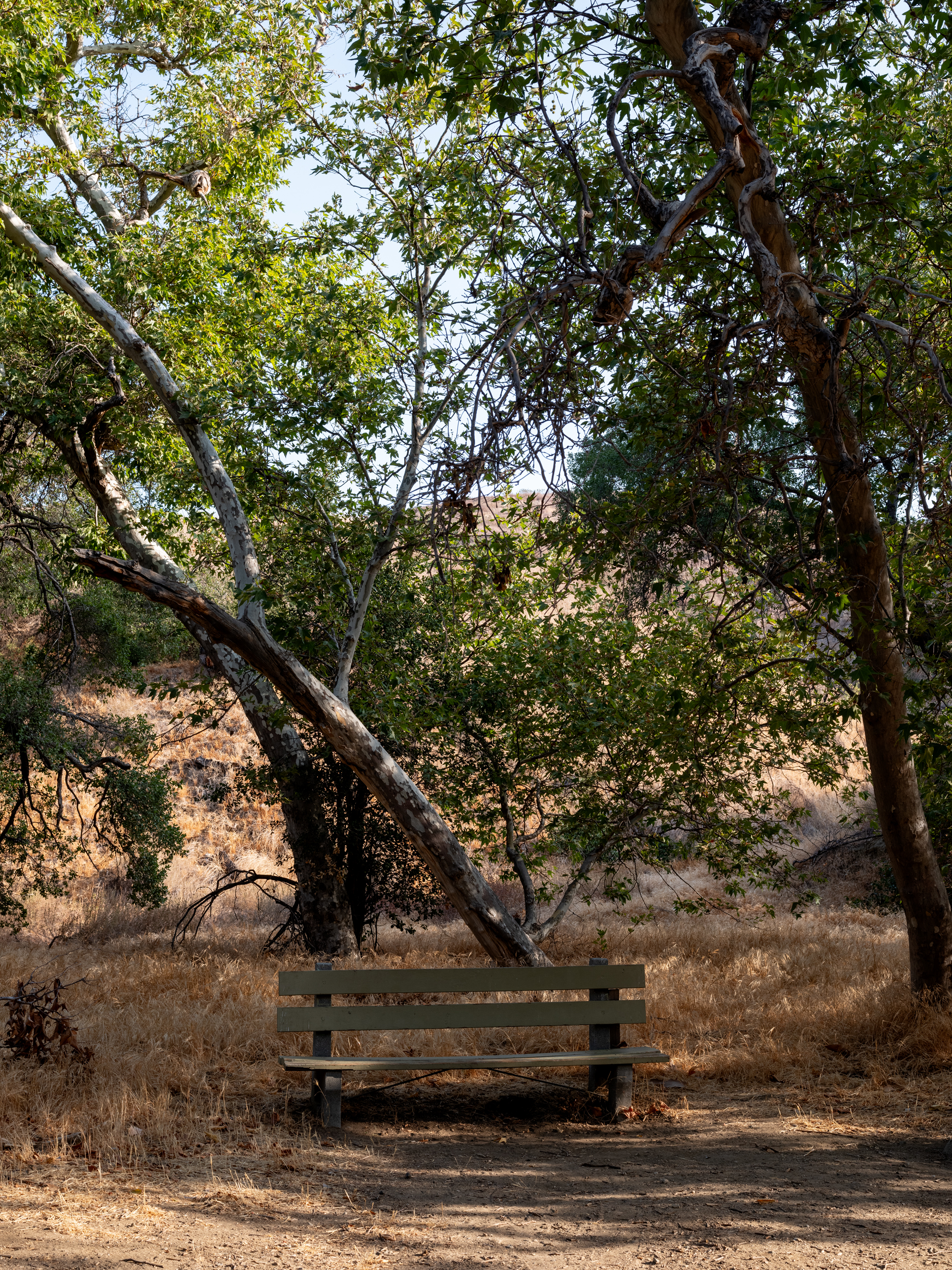
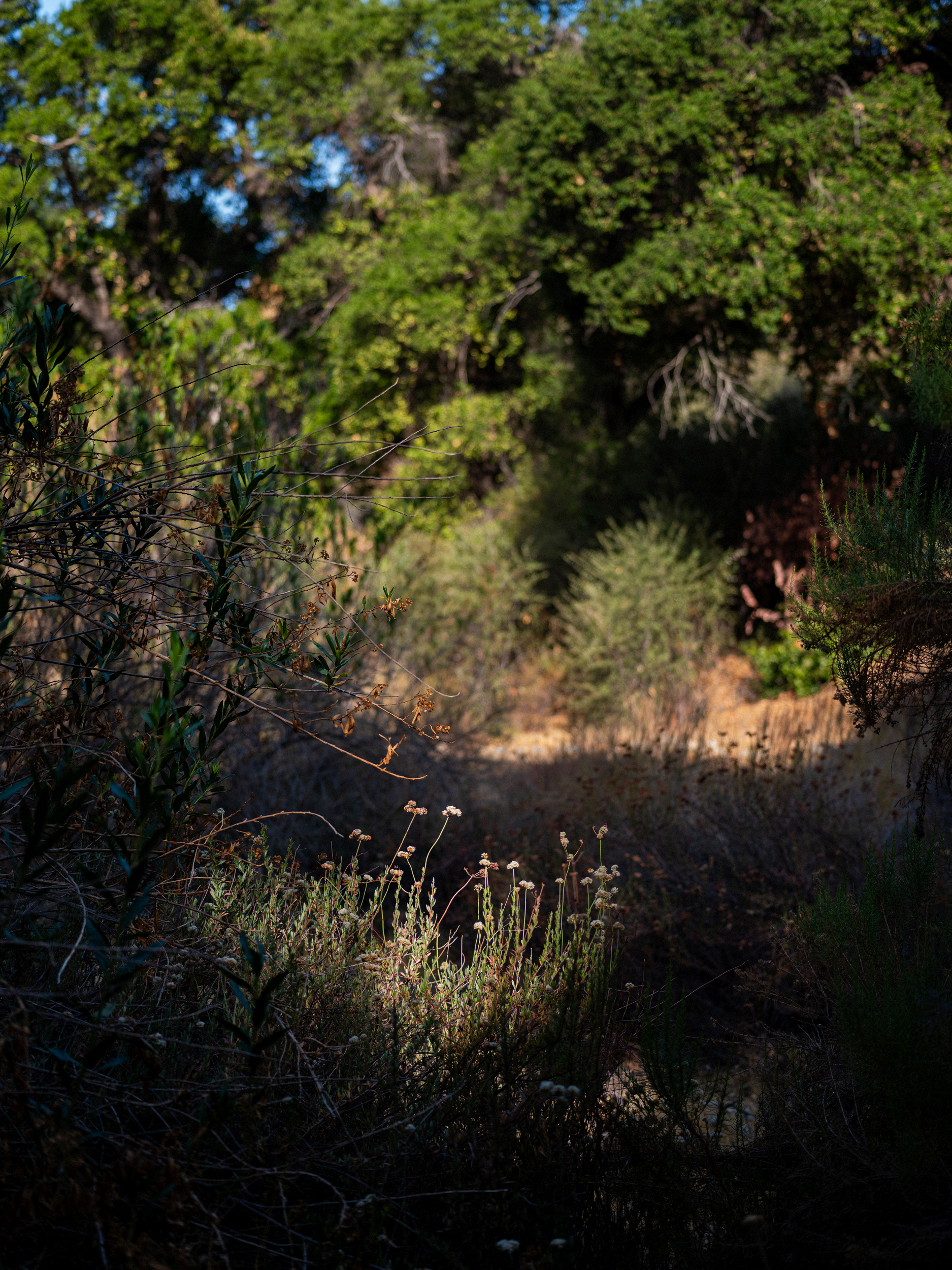
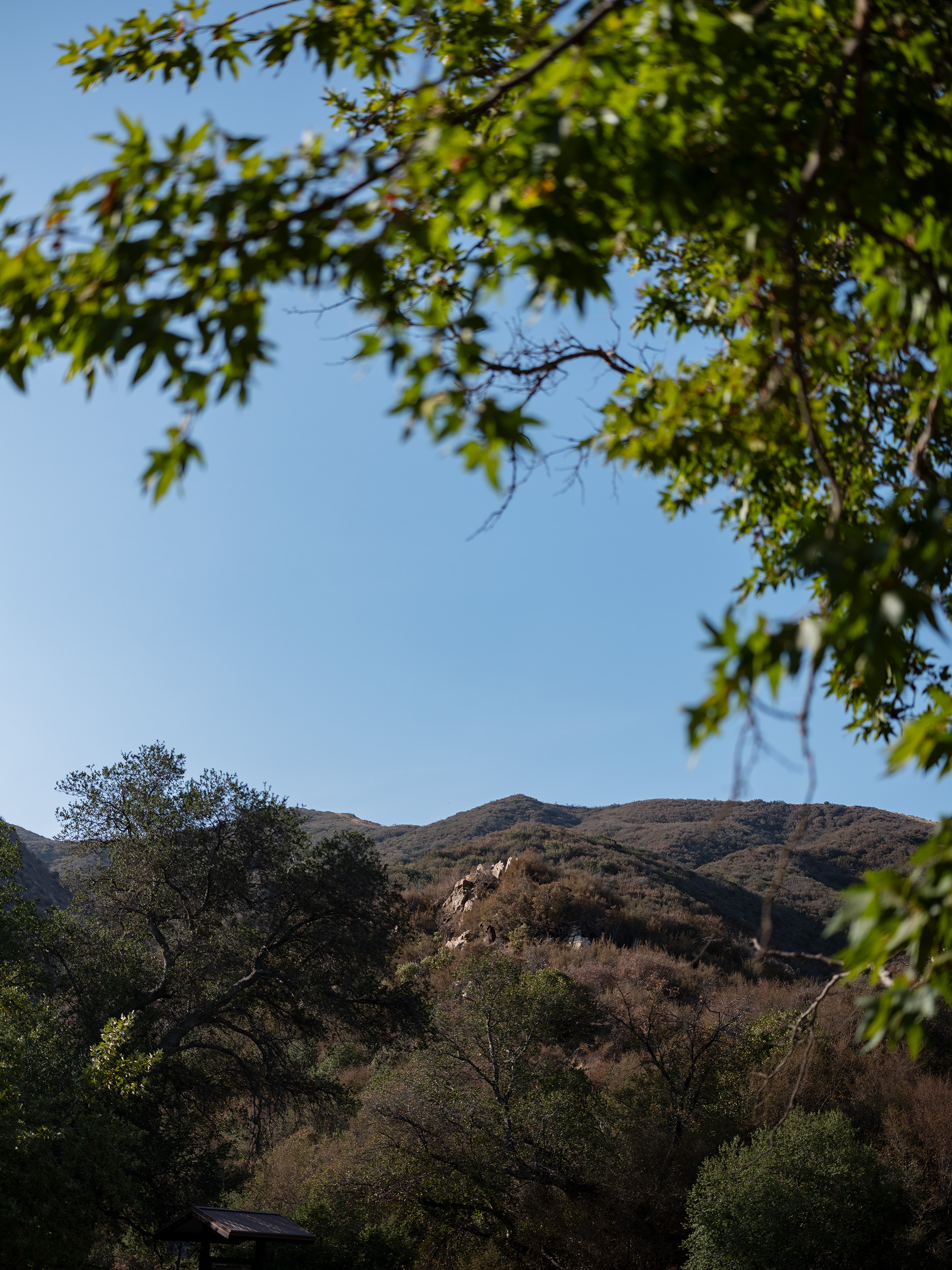
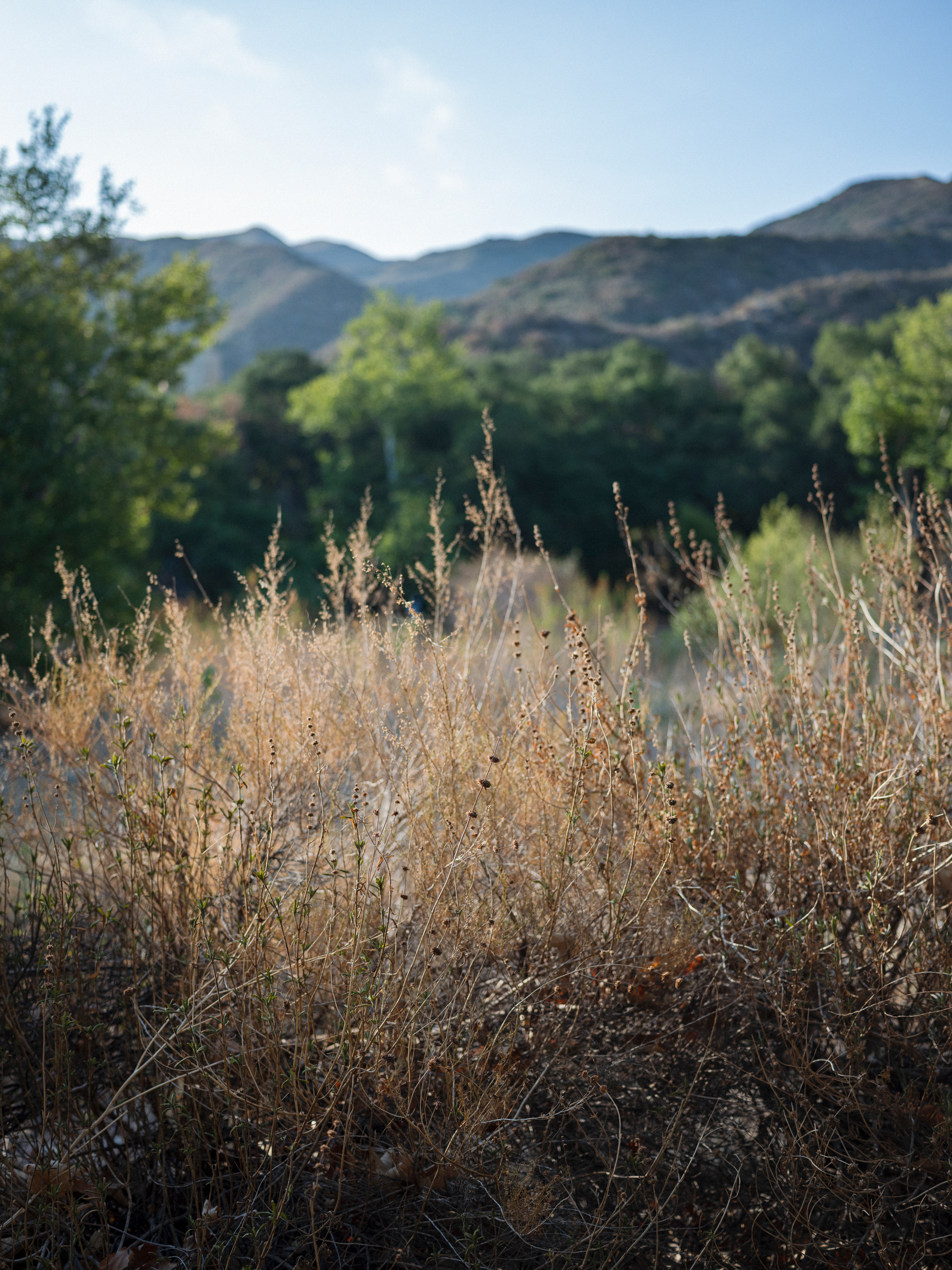
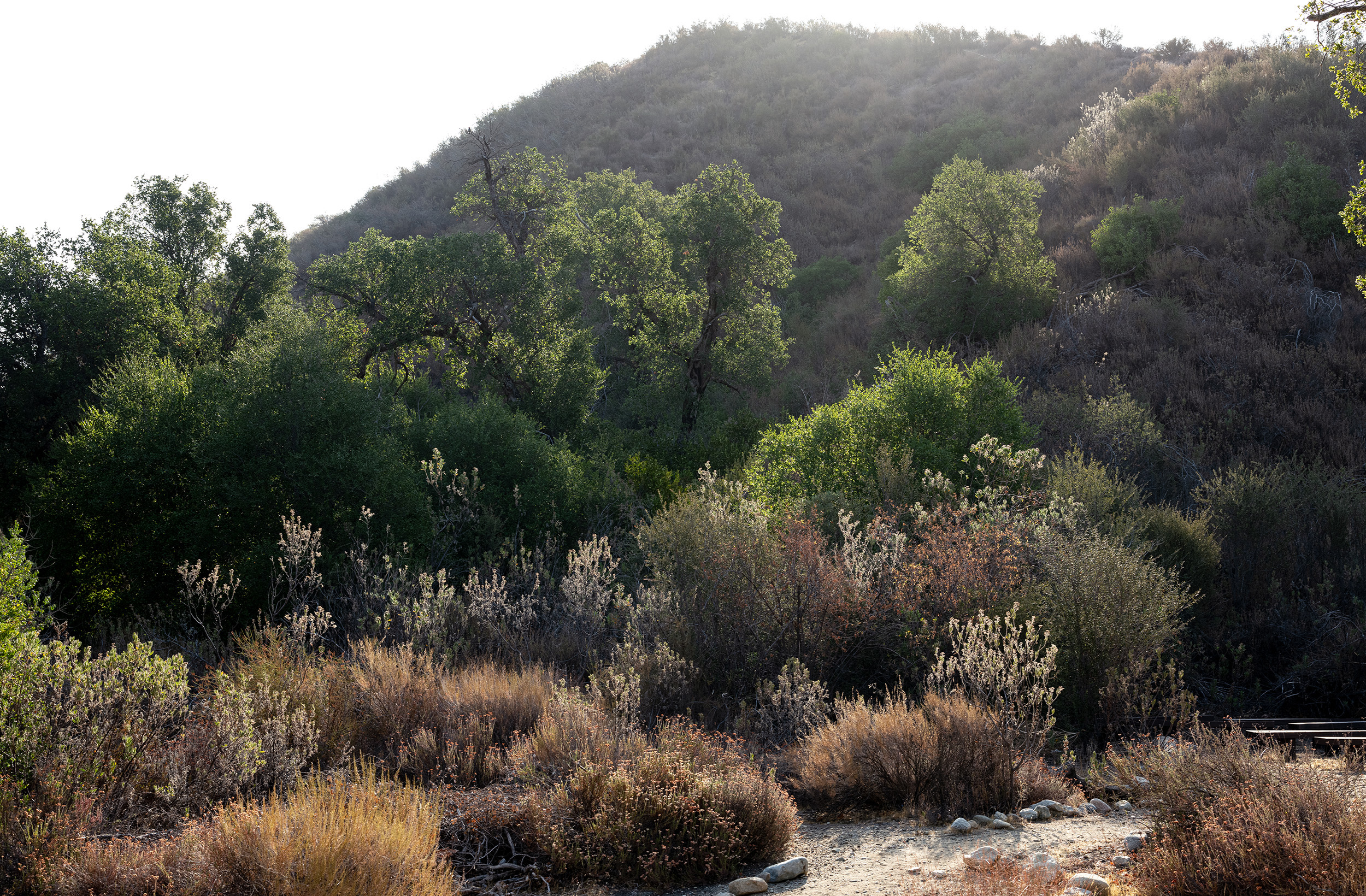
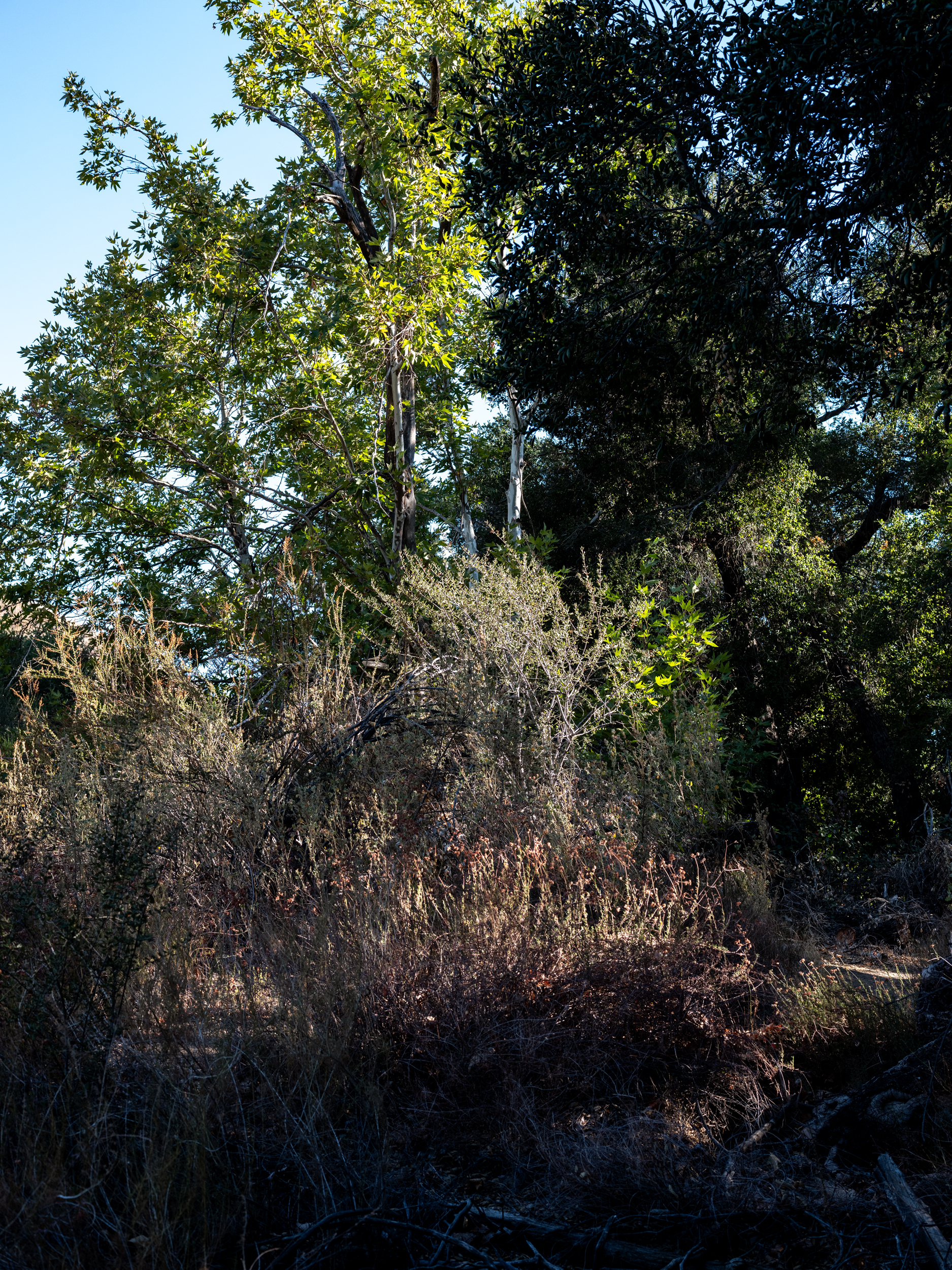
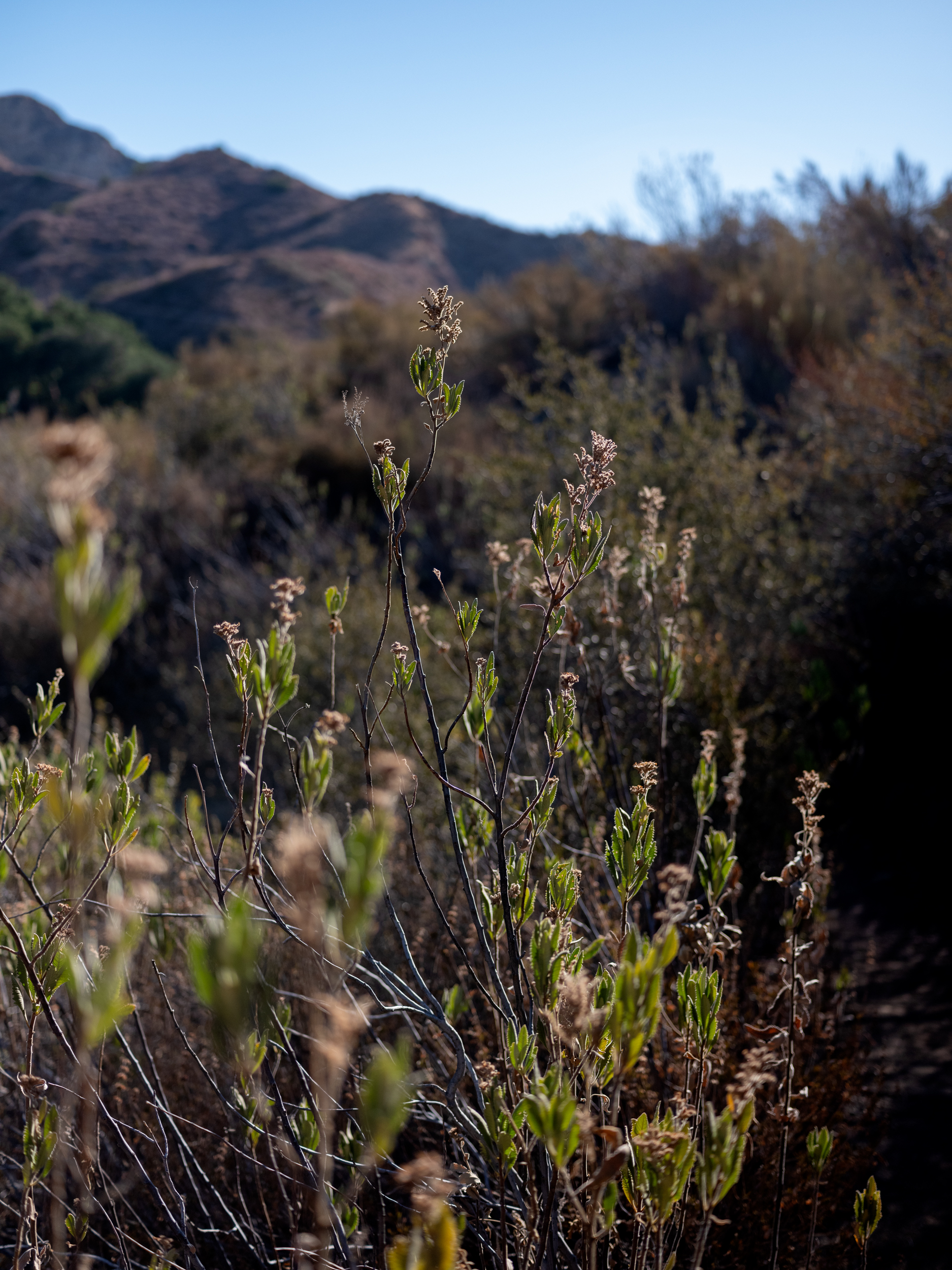
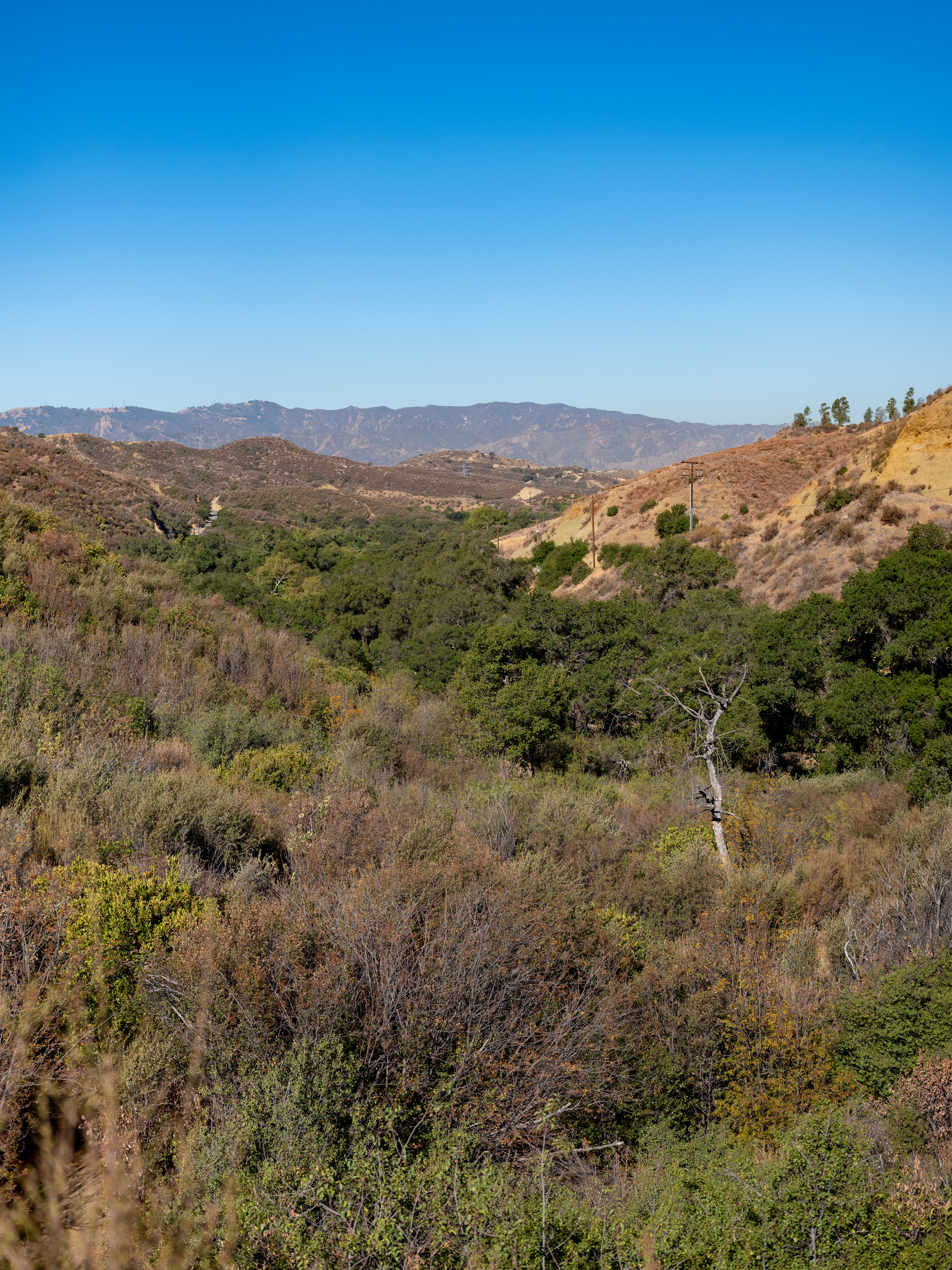
Placerita Canyon Natural Area and Nature Center
9152 Placerita Canyon Rd
Newhall, CA 91321
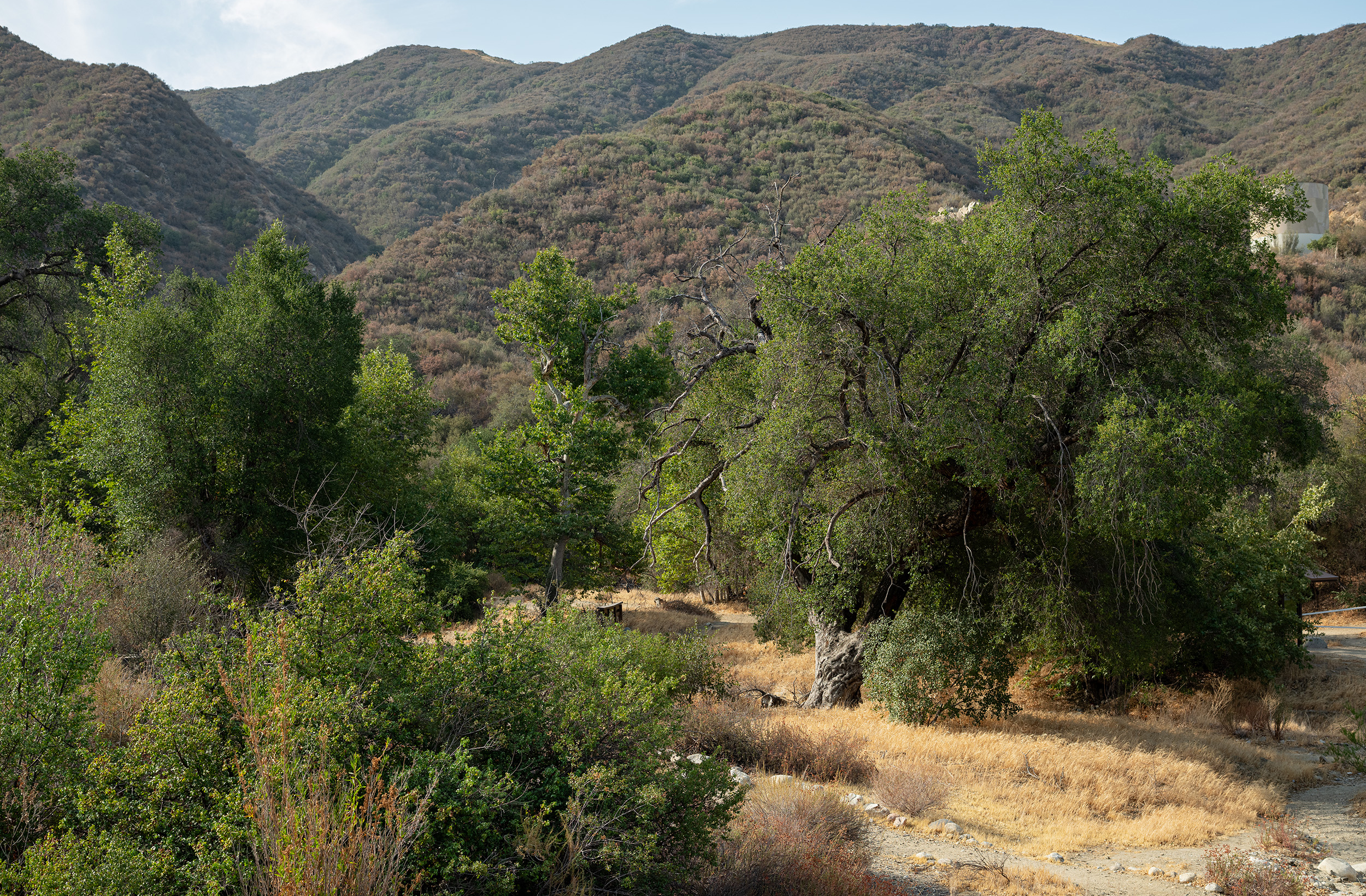

Established:
1950
Size:
330 Acres
Features:
Paved walking Trails
Trails with few steps
Public Programing
Hiking Trails
Local History
Seasonal Waterfall
Nature Trail
Picnic Area
Weird Geologic Feature
Notable Plants:
Coast live oak (Quercus agrifolia)
Canyon Live Oak
(Quercus chrysolepis)
Scrub oak
(Quercus berberidifolia)
Thickleaf Yerba Santa
(Eriodictyon crassifolium)
Mountain mahogany
(Cercocarpus betuloides)
Holly leaf cherry
(Prunus ilicifolia)
California Peony
(Paeonia californica)
Hoaryleaf Ceanothus
(Ceanothus crassifolius)
Blue Elder Berry
(Sambucus mexicana)
Best Time to visit:
All Year
Placerita Canyon has something wonderful to offer all year round and the wooded areas provide shade, giving an escape in the hottest months. In spring there are wild flowers and peonies, which can be found to the South of the Nature Center on the Acorn Trail. This is also the time that the creek is filled with water and the waterfall is active. The summer has the hills covered with chamise and buckwheat blooms. In fall the cottonwoods are bursting with golden fall color. In winter the hills begin to team with life.
The story is told like this: around noon on March 9th, 1842, on his 40th birthday, Francisco Lopez fell asleep under an oak tree and dreamed of floating in a pool of gold. When he awoke, he walked across the small, nearby, creek to a grove of sycamores, used his knife to pull up some wild onions and found gold clinging to the roots. This would be the first documented discovery of gold in, what is now considered, the State of California, predating Sutter Mill by six years.
Gloriously named “The Oak of the Golden Dream’’, the tree that he slept beneath and the creek that he crossed are both to be found at the Placerita Canyon State Park. Visitors can access the oak by using the paved “Heritage Trail”, a map of the trail and the information for each numbered stop, can be found here.
The trail follows the creek underneath Placerita Canyon Road. The underpass was painted with a series of murals in 1976 by artist by Rudy Pavini. The murals show the history of the canyon starting with the Tatvim in approx. 450 A.D. to the discovery of gold in 1842. The oak is found in a beautiful grove of other oak trees and western sycamores. There are often long stem buckwheats up on the hill behind the oak. A dirt trail continues past the oak, to a particularly beautiful meadow at the edge of the Natural Area.
Placerita Canyon has several other self guided nature trails addition to the Heritage Trail. The Acorn trail, the Botany Trail and the Ecology Trail all which start in the general area of the Nature Center. The Ecology Trail has many identification tags for many of the plants, which makes it a great resource for those who are learning to ID plants in the wild. The Trail is a relatively easy three-quarters of a mile long. It starts at the base of the canyon and winds up the side of the hills. The elevation change,
Gloriously named “The Oak of the Golden Dream’’, the tree that he slept beneath and the creek that he crossed are both to be found at the Placerita Canyon State Park. Visitors can access the oak by using the paved “Heritage Trail”, a map of the trail and the information for each numbered stop, can be found here.
The trail follows the creek underneath Placerita Canyon Road. The underpass was painted with a series of murals in 1976 by artist by Rudy Pavini. The murals show the history of the canyon starting with the Tatvim in approx. 450 A.D. to the discovery of gold in 1842. The oak is found in a beautiful grove of other oak trees and western sycamores. There are often long stem buckwheats up on the hill behind the oak. A dirt trail continues past the oak, to a particularly beautiful meadow at the edge of the Natural Area.
Placerita Canyon has several other self guided nature trails addition to the Heritage Trail. The Acorn trail, the Botany Trail and the Ecology Trail all which start in the general area of the Nature Center. The Ecology Trail has many identification tags for many of the plants, which makes it a great resource for those who are learning to ID plants in the wild. The Trail is a relatively easy three-quarters of a mile long. It starts at the base of the canyon and winds up the side of the hills. The elevation change,
while slight, is enough to offer an incredible range of diversity in habitats and plants. Visitors can find three distinct plant communities, of oak woodland, seasonal riparian, and the chaparral.
It begins behind the Nature Center at the base of the canyon. At the beginning of the trail there is an example of a Tataviam Kyii and several ways of Tataviam food storage. At certain points, the trail runs along a small seasonal creek. Visitors can see the difference in plants that prefer and or can handle seasonal flooding, great for planting around a bioswale, vernal pool or an area that naturally floods. The trail then winds a little up into the hills and the plant community changes again and you enter the chaparral. Here visitors can see thickleaf yerba santa, chamise, various species of ceanothus and black sage, amongst many other plants. The top of the trail has a charming view of the canyon floor, which is especially delightful in late spring.
“Placerita Canyon is a beautiful place no matter what time of year. However unlikely it may seem, especially during our late summer heat waves, there is always something here in bloom.”
In the late 1800’s, after the treaty of Guadalupe, William Raymond Walker and Rosa Belle Evans acquired the mining rights for Placerita Canyon. Their son Frank would later in 1909, build the Walker Cabin and start a “gold mining camp”, complete with cabins, picnic tables and a bbq dinner. The family moved there full time in 1920 1920 until 1949. The Walkers homesteaded on the land and raised 12 children here. Interestingly, the family went from living in the cabin to renting it out to Hollywood productions as a homesteaders cabin. The State of California purchased the land in 1949 for the creation of the state park.


The Tataviam have lived in Santa Clarita and the surrounding areas since 450 A.D. They
inhabited about 20 villages that ranged through the Topatopa Mountains to the Sawmill Mountains in the North and into Antelope Valley to the east. Placerita Canyon itself, was used as a foraging site for acorns, an important food source.
When Mission San Fernando Rey de España was founded in 1797, the land in the Santa Clarita Valley was seized to become the Mission Rancho and used for agriculture. The Tataviam who were living in the valley, specifically the villages of Nuhubit and Chaguibit were taken to the mission, converted to Catholicism and used for labor.
In 1842 after the Mexican War of Independence and not long before Lopez would have his prophetic dream, the land was secularized from the church and given as a land grant to Antionio De Valle. Apparently the land was meant to be given back to the Tataviam, however that shockingly didn’t happen.
It was this transfer of land that gave Lopez the opportunity to wander around the Canyon on his 40th birthday and discover gold. As beautiful as the story of the Oak of the Golden dream is, on closer examination, the story changes.
When Mission San Fernando Rey de España was founded in 1797, the land in the Santa Clarita Valley was seized to become the Mission Rancho and used for agriculture. The Tataviam who were living in the valley, specifically the villages of Nuhubit and Chaguibit were taken to the mission, converted to Catholicism and used for labor.
In 1842 after the Mexican War of Independence and not long before Lopez would have his prophetic dream, the land was secularized from the church and given as a land grant to Antionio De Valle. Apparently the land was meant to be given back to the Tataviam, however that shockingly didn’t happen.
It was this transfer of land that gave Lopez the opportunity to wander around the Canyon on his 40th birthday and discover gold. As beautiful as the story of the Oak of the Golden dream is, on closer examination, the story changes.
It moves from “romantic fairytale of dreams and oaks and gold” too much more of “trained mineralogist finds gold after looking for in it an area in which it had been previously reported” territory. I Because that is really what happened. Lopez had studied mineralogy at Colegia de Mineria in Mexico City and was using his time looking after cattle on his niece’s land to look for gold. There had been reports of gold in the area since the 1790’s and as recently as 1833.
“As the garden has grown and aged, it has shifted to placing more importance on native plants and increasing biodiversity.”
The design of the garden was heavily influenced by Jan Smithen’s book “Sun-Drenched Gardens: The Mediterranean Style”. It was originally designed as a more water-wise and “climate appropriate” mediterranean garden. As the garden has grown and aged, it has shifted to placing more importance on native plants and increasing biodiversity.


Oak of the Golden Dream
The oak of the golden dream has not always been so well cared for. The tree was registered as a historic landmark in 1935, but by the late 80’s it was struggling. The tree had been vandalized, and was old and sick. Possibly the largest contributor to the declining health was the creation of Placerita Canyon Road, which runs just behind the tree. The dirt that was brought in to create the road was left and was significantly higher than the base of the tree. Vitortors packed down the ground around the base damaging the tree. This area was fenced off and the tree was given a much needed pruning to relieve it of dead branches which were causing the hollow trunk to sag. The oak is now in much better health.
Nature Center Opening Hours and Information:
Phone: (661) 259-7721
Email: info@placerita.org
Hours: 9am – 5pm Tuesday-Sunday
Natural Area Opening Hours:
March 1st to October 31st
Operating Hours
Tuesday – Sunday
8:00am to 7:30pm
Closed Monday
November 1st to February 28th
Operating Hours
Tuesday – Sunday
8:00am to 5:00pm
Closed Monday







(image taken in early August)


(image taken in early August)

(image taken in early August)












Placerita Canyon Natural Area and Nature Center
275 Arlington Drive
Pasadena, CA 91105

Established:
1950
Size:
330 acres
Features:
Paved walking Trails
Trails with few steps
Public Programing
Hiking Trails
Local History
Seasonal Waterfall
Nature Trail
Picnic Area
Weird Geologic Feature
Notable Plants:
Coast live oak (Quercus agrifolia)
Canyon Live Oak (Quercus chrysolepis)
Scrub oak (Quercus berberidifolia)
Thickleaf Yerba Santa (Eriodictyon crassifolium)
Mountain mahogany (Cercocarpus betuloides)
Holly leaf cherry (Prunus ilicifolia)
California Peony (Paeonia californica)
Hoaryleaf Ceanothus (Ceanothus crassifolius)
Blue Elder Berry (Sambucus mexicana)
Best Time to visit:
All Year
Placerita Canyon has something wonderful to offer all year round and the wooded areas provide shade, giving an escape in the hottest months. In spring there are wild flowers and peonies, which can be found to the South of the Nature Center on the Acorn Trail. This is also the time that the creek is filled with water and the waterfall is active. The summer has the hills covered with chamise and buckwheat blooms. In fall the cottonwoods are bursting with golden fall color. In winter the hills begin to team with life.
The story is told like this: around noon on March 9th, 1842, on his 40th birthday, Francisco Lopez fell asleep under an oak tree and dreamed of floating in a pool of gold. When he awoke, he walked across the small, nearby, creek to a grove of sycamores, used his knife to pull up some wild onions and found gold clinging to the roots. This would be the first documented discovery of gold in, what is now considered, the State of California, predating Sutter Mill by six years.
Gloriously named “The Oak of the Golden Dream’’, the tree that he slept beneath and the creek that he crossed are both to be found at the Placerita Canyon State Park. Visitors can access the oak by using the paved “Heritage Trail”, a map of the trail and the information for each numbered stop, can be found here.
The trail follows the creek underneath Placerita Canyon Road. The underpass was painted with a series of murals in 1976 by artist by Rudy Pavini. The murals show the history of the canyon starting with the Tatvim in approx. 450 A.D. to the discovery of gold in 1842. The oak is found in a beautiful grove of other oak trees and western sycamores. There are often long stem buckwheats up on the hill behind the oak. A dirt trail continues past the oak, to a particularly beautiful meadow at the edge of the Natural Area.
Placerita Canyon has several other self guided nature trails addition to the Heritage Trail. The Acorn trail, the Botany Trail and the Ecology Trail all which start in the general area of the Nature Center. The Ecology Trail has many identification tags for many of the plants, which makes it a great resource for those who are learning to ID plants in the wild. The Trail is a relatively easy three-quarters of a mile long. It starts at the base of the canyon and winds up the side of the hills. The elevation change,
Gloriously named “The Oak of the Golden Dream’’, the tree that he slept beneath and the creek that he crossed are both to be found at the Placerita Canyon State Park. Visitors can access the oak by using the paved “Heritage Trail”, a map of the trail and the information for each numbered stop, can be found here.
The trail follows the creek underneath Placerita Canyon Road. The underpass was painted with a series of murals in 1976 by artist by Rudy Pavini. The murals show the history of the canyon starting with the Tatvim in approx. 450 A.D. to the discovery of gold in 1842. The oak is found in a beautiful grove of other oak trees and western sycamores. There are often long stem buckwheats up on the hill behind the oak. A dirt trail continues past the oak, to a particularly beautiful meadow at the edge of the Natural Area.
Placerita Canyon has several other self guided nature trails addition to the Heritage Trail. The Acorn trail, the Botany Trail and the Ecology Trail all which start in the general area of the Nature Center. The Ecology Trail has many identification tags for many of the plants, which makes it a great resource for those who are learning to ID plants in the wild. The Trail is a relatively easy three-quarters of a mile long. It starts at the base of the canyon and winds up the side of the hills. The elevation change,

while slight, is enough to offer an incredible range of diversity in habitats and plants. Visitors can find three distinct plant communities, of oak woodland, seasonal riparian, and the chaparral.
It begins behind the Nature Center at the base of the canyon. At the beginning of the trail there is an example of a Tataviam Kyii and several ways of Tataviam food storage. At certain points, the trail runs along a small seasonal creek. Visitors can see the difference in plants that prefer and or can handle seasonal flooding, great for planting around a bioswale, vernal pool or an area that naturally floods. The trail then winds a little up into the hills and the plant community changes again and you enter the chaparral. Here visitors can see thickleaf yerba santa, chamise, various species of ceanothus and black sage, amongst many other plants. The top of the trail has a charming view of the canyon floor, which is especially delightful in late spring.
“Placerita Canyon is a beautiful place no matter what time of year. However unlikely it may seem, especially during our late summer heat waves, there is always something here in bloom.”
The other hillsides offer more challenging and longer hiking trails. In the winter through late spring/early fall visitors can hike to a waterfall and along the wash that runs through the main section of the natural area. The Canyon’s hillsides offer access to many exciting chaparral plants that are not always so easy to reach.
Placerita Canyon is a beautiful place no matter what time of year. However unlikely it may seem, especially during our late summer heat waves, there is always something here in bloom. The beauty of the canyon and its almost mythical history, make it such a magical place. The Placerita Canyon is a perfect example of how resilient and yet how fragile our ecosystem can be.

(image taken in early August)

The Tataviam have lived in Santa Clarita and the surrounding areas since 450 A.D. They inhabited about 20 villages that ranged through the Topatopa Mountains to the Sawmill Mountains in the North and into Antelope Valley to the east. Placerita Canyon itself, was used as a foraging site for acorns, an important food source.
When Mission San Fernando Rey de España was founded in 1797, the land in the Santa Clarita Valley was seized to become the Mission Rancho and used for agriculture. The Tataviam who were living in the valley, specifically the villages of Nuhubit and Chaguibit were taken to the mission, converted to Catholicism and used for labor.
In 1842 after the Mexican War of Independence and not long before Lopez would have his prophetic dream, the land was secularized from the church and given as a land grant to Antionio De Valle. Apparently the land was meant to be given back to the Tataviam, however that shockingly didn’t happen.
It moves from “romantic fairytale of dreams and oaks and gold” too much more of “trained mineralogist finds gold after looking for in it an area in which it had been previously reported” territory. I Because that is really what happened. Lopez had studied mineralogy at Colegia de Mineria in Mexico City and was using his time looking after cattle on his niece’s land to look for gold. There had been reports of gold in the area since the 1790’s and as recently as 1833.
“Apparently the land was meant to be given back to the Tataviam, however that shockingly didn’t happen.”
In the late 1800’s, after the treaty of Guadalupe, William Raymond Walker and Rosa Belle Evans acquired the mining rights for Placerita Canyon. Their son Frank would later in 1909, build the Walker Cabin and start a “gold mining camp”, complete with cabins, picnic tables and a bbq dinner. The family moved there full time in 1920 1920 until 1949. The Walkers homesteaded on the land and raised 12 children here. Interestingly, the family went from living in the cabin to renting it out to Hollywood productions as a homesteaders cabin. The State of California purchased the land in 1949 for the creation of the state park.
When Mission San Fernando Rey de España was founded in 1797, the land in the Santa Clarita Valley was seized to become the Mission Rancho and used for agriculture. The Tataviam who were living in the valley, specifically the villages of Nuhubit and Chaguibit were taken to the mission, converted to Catholicism and used for labor.
In 1842 after the Mexican War of Independence and not long before Lopez would have his prophetic dream, the land was secularized from the church and given as a land grant to Antionio De Valle. Apparently the land was meant to be given back to the Tataviam, however that shockingly didn’t happen.
It moves from “romantic fairytale of dreams and oaks and gold” too much more of “trained mineralogist finds gold after looking for in it an area in which it had been previously reported” territory. I Because that is really what happened. Lopez had studied mineralogy at Colegia de Mineria in Mexico City and was using his time looking after cattle on his niece’s land to look for gold. There had been reports of gold in the area since the 1790’s and as recently as 1833.
“Apparently the land was meant to be given back to the Tataviam, however that shockingly didn’t happen.”
In the late 1800’s, after the treaty of Guadalupe, William Raymond Walker and Rosa Belle Evans acquired the mining rights for Placerita Canyon. Their son Frank would later in 1909, build the Walker Cabin and start a “gold mining camp”, complete with cabins, picnic tables and a bbq dinner. The family moved there full time in 1920 1920 until 1949. The Walkers homesteaded on the land and raised 12 children here. Interestingly, the family went from living in the cabin to renting it out to Hollywood productions as a homesteaders cabin. The State of California purchased the land in 1949 for the creation of the state park.

Oak of the Golden Dream
The oak of the golden dream has not always been so well cared for. The tree was registered as a historic landmark in 1935, but by the late 80’s it was struggling. The tree had been vandalized, and was old and sick. Possibly the largest contributor to the declining health was the creation of Placerita Canyon Road, which runs just behind the tree. The dirt that was brought in to create the road was left and was significantly higher than the base of the tree. Vitortors packed down the ground around the base damaging the tree. This area was fenced off and the tree was given a much needed pruning to relieve it of dead branches which were causing the hollow trunk to sag. The oak is now in much better health.
Nature Center Opening Hours and Information:
Phone: (661) 259-7721
Email: info@placerita.org
Hours: 9am – 5pm Tuesday-Sunday
Natural Area Opening Hours:
March 1st to October 31st
Operating Hours
Tuesday – Sunday
8:00am to 7:30pm
Closed Monday
November 1st to February 28th
Operating Hours
Tuesday – Sunday
8:00am to 5:00pm
Closed Monday






















